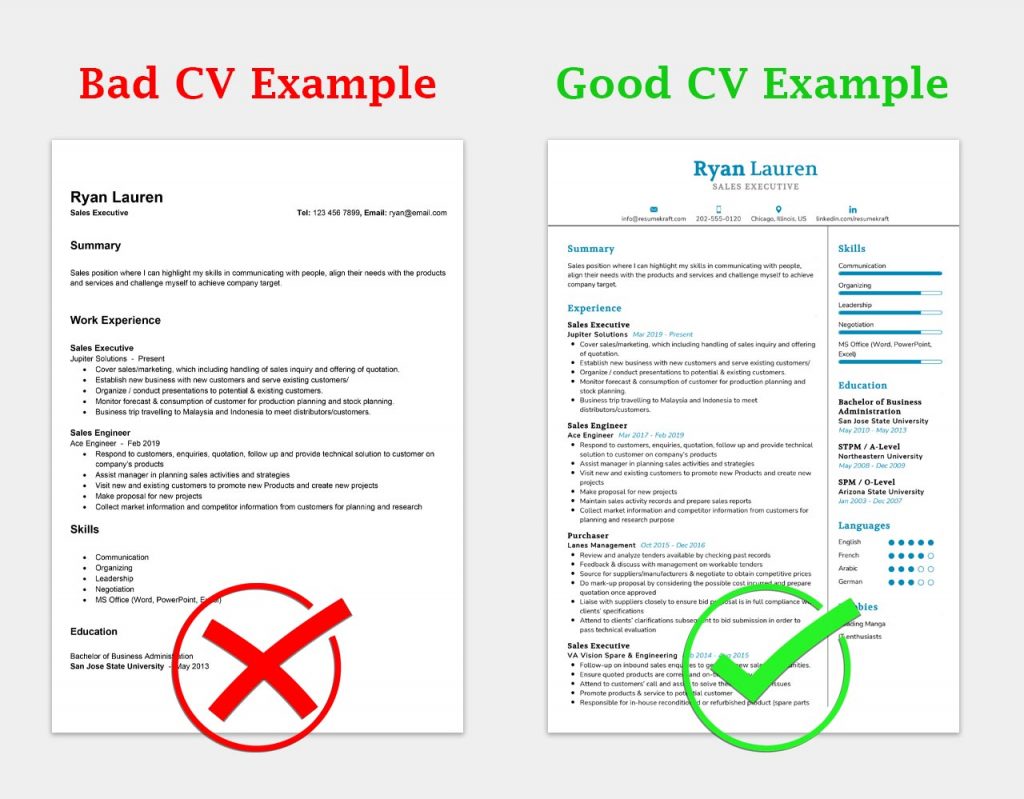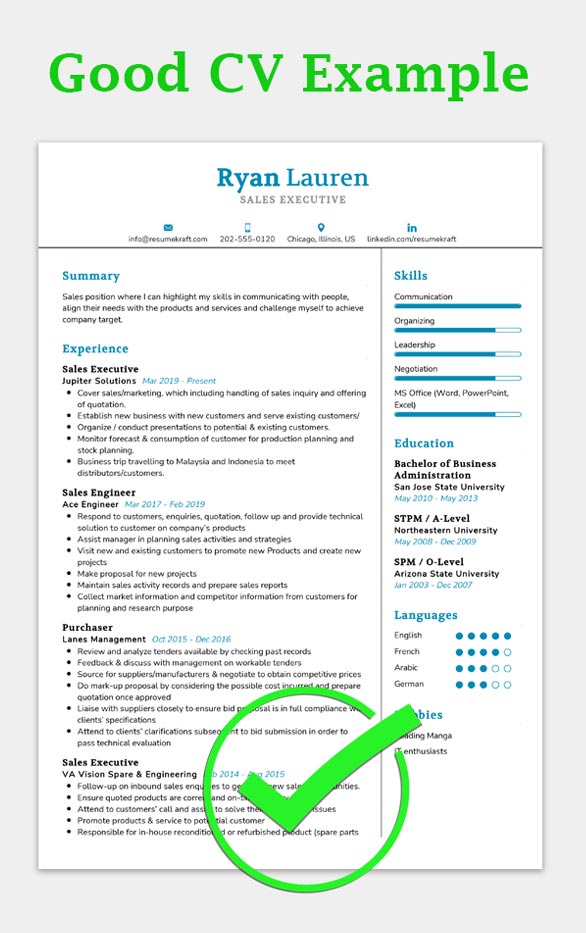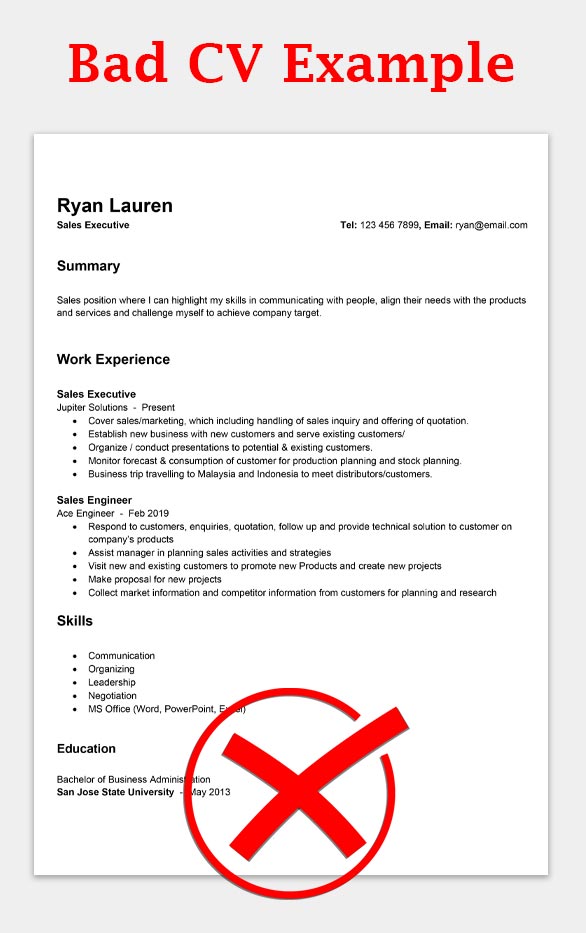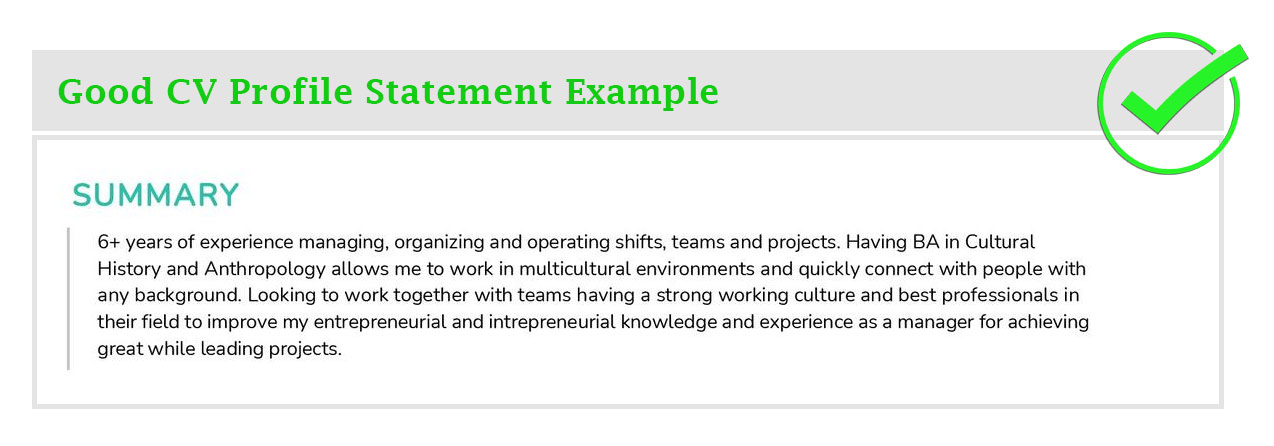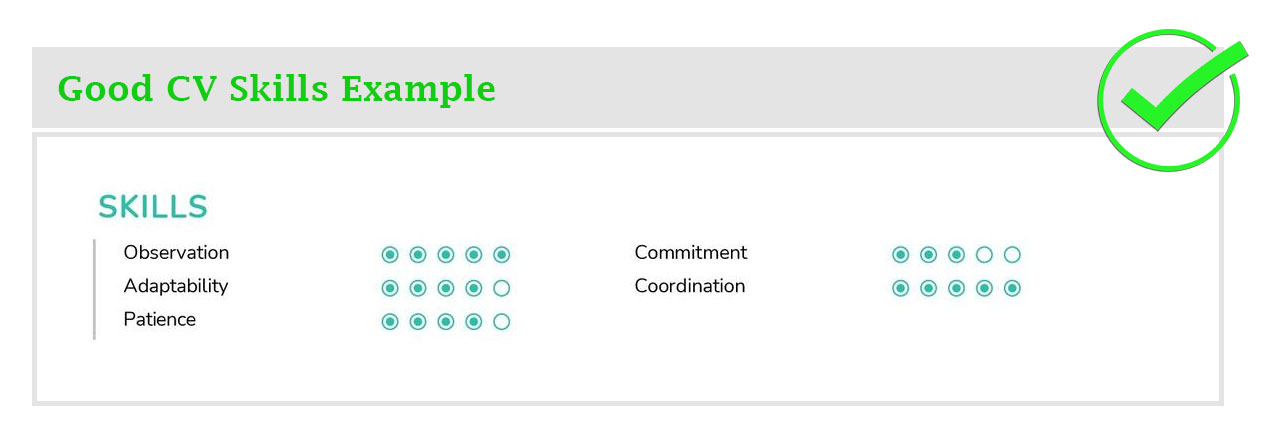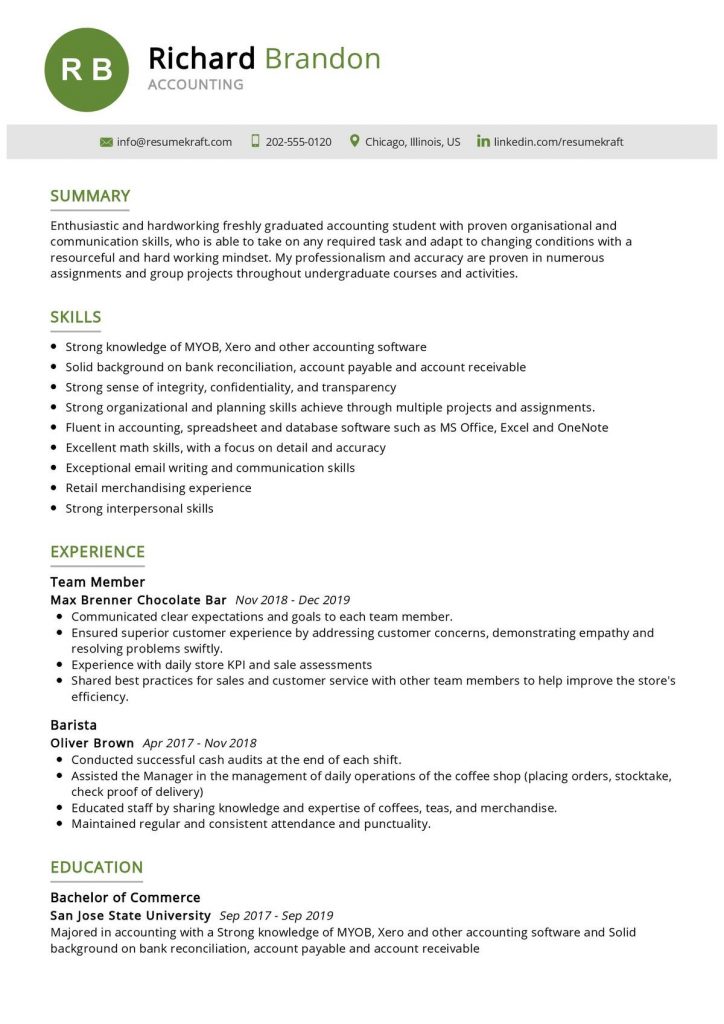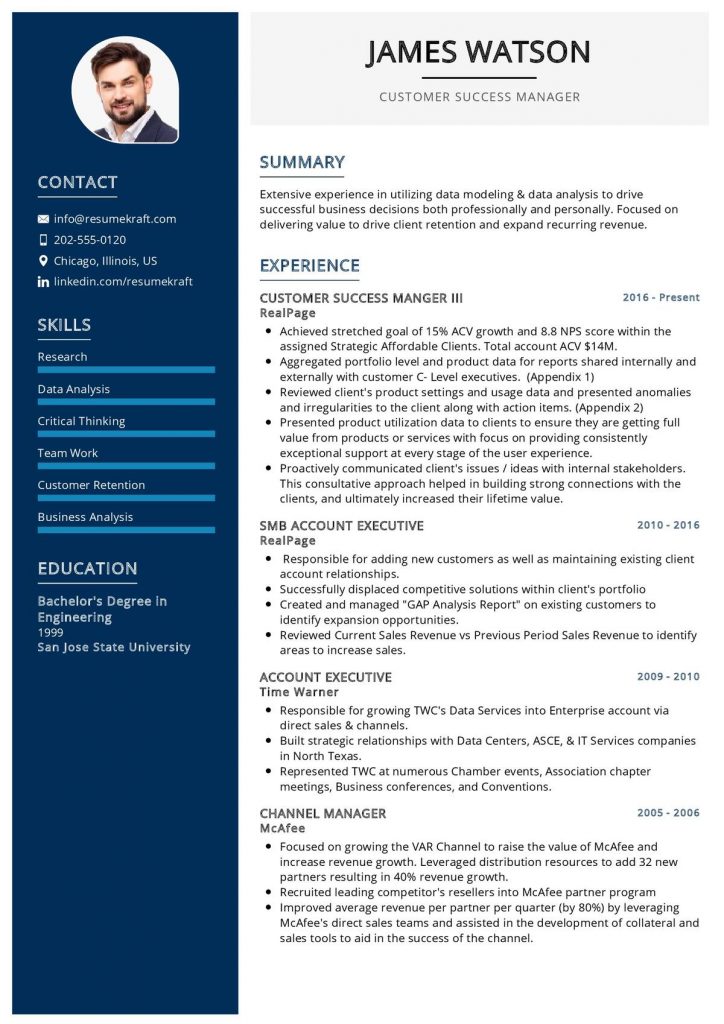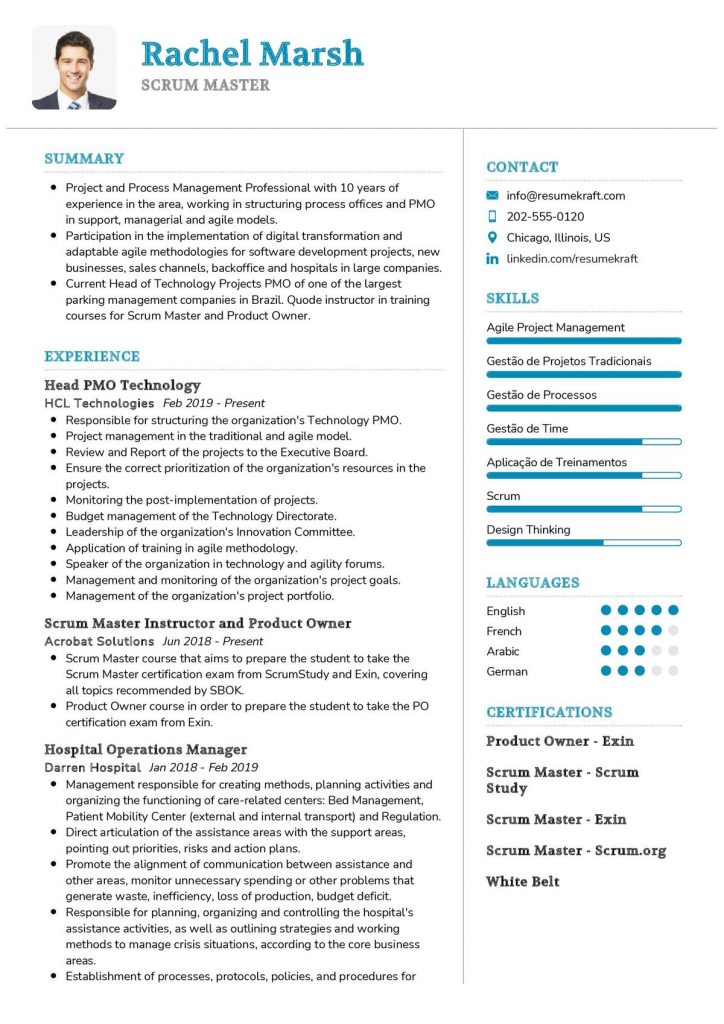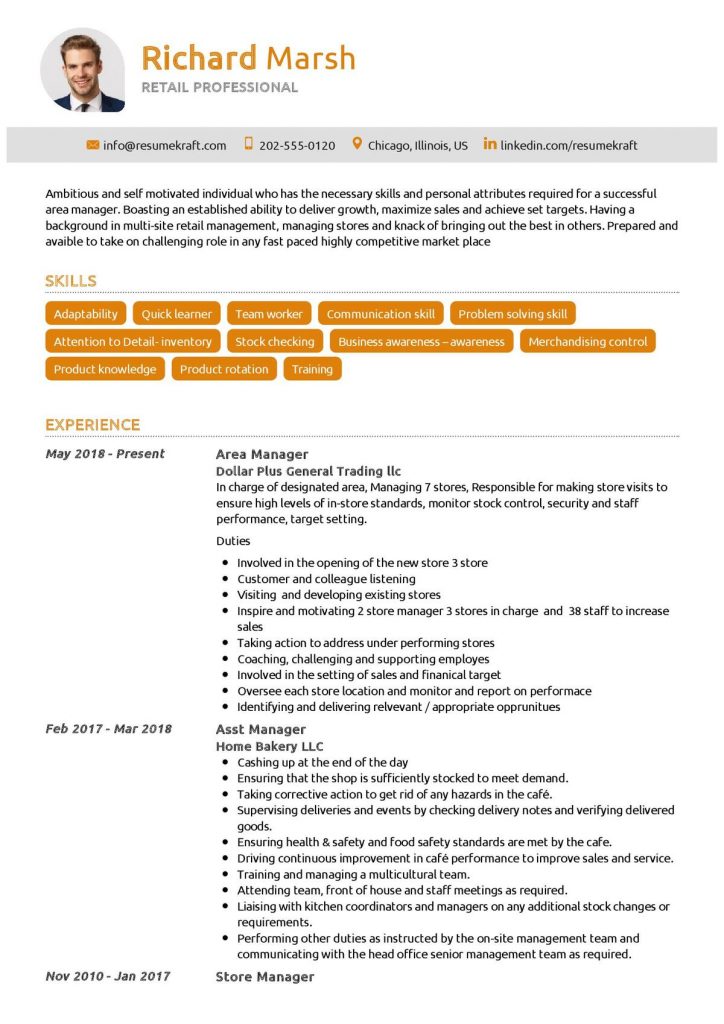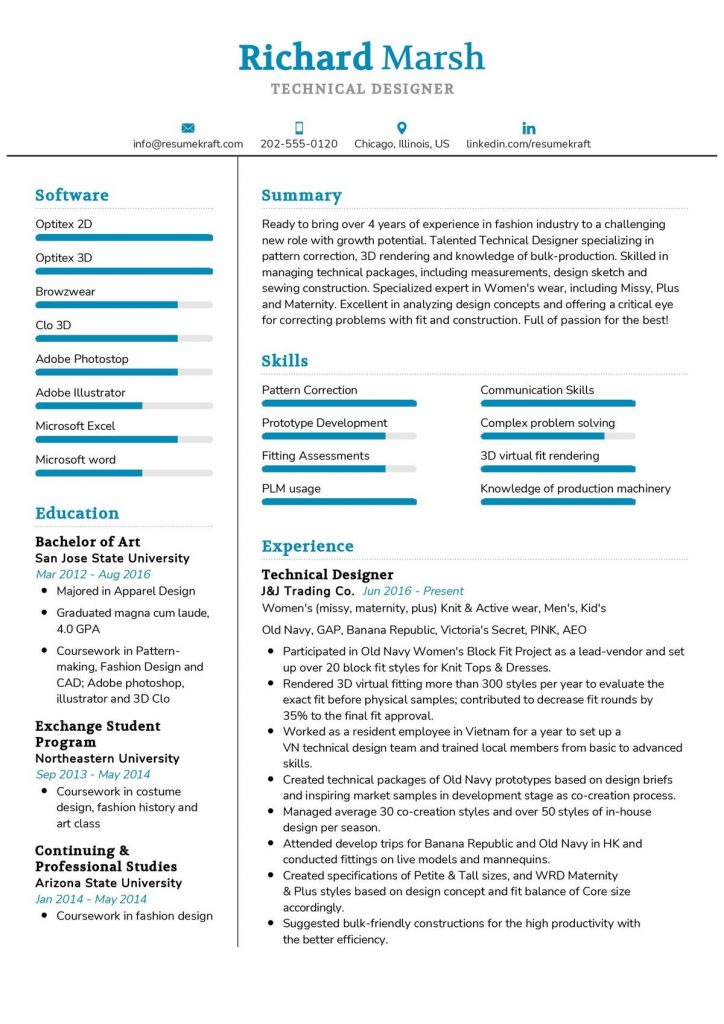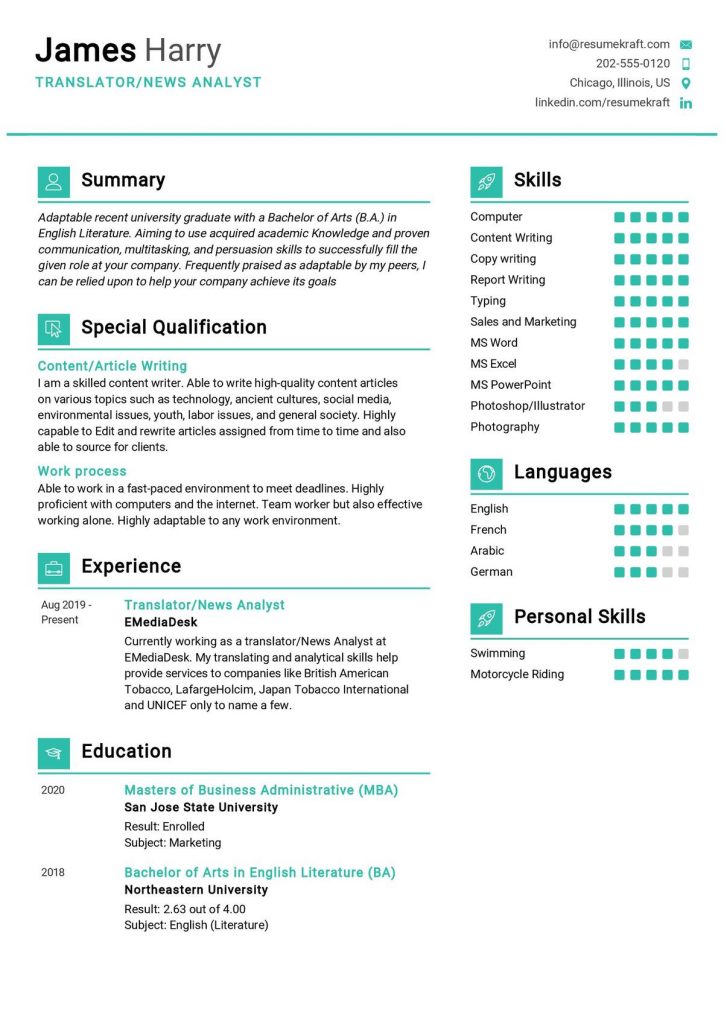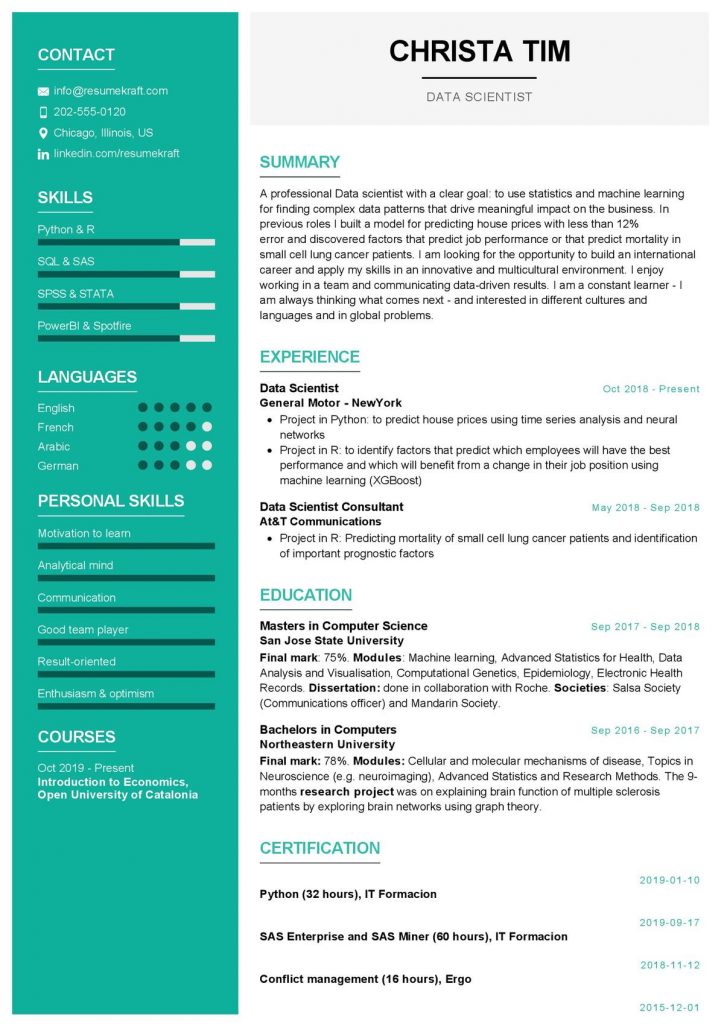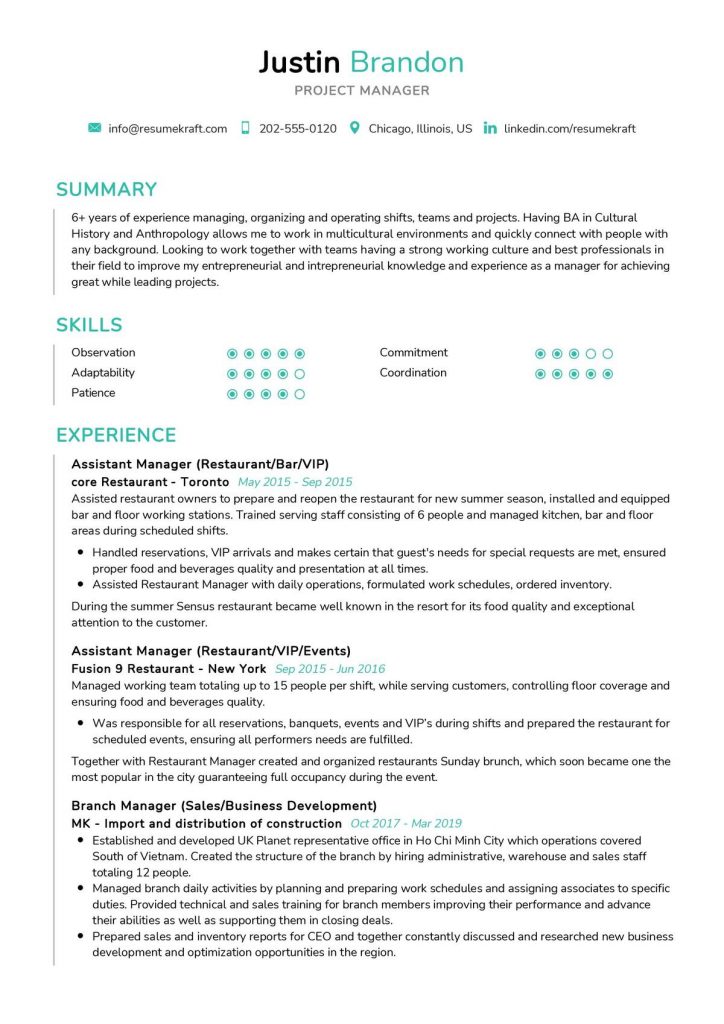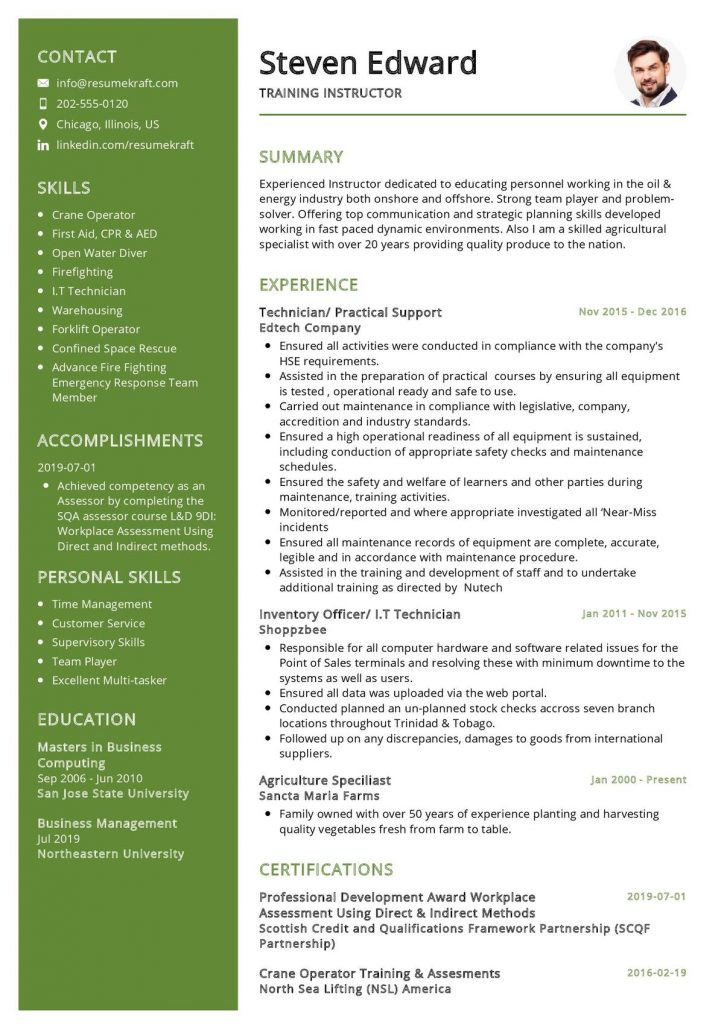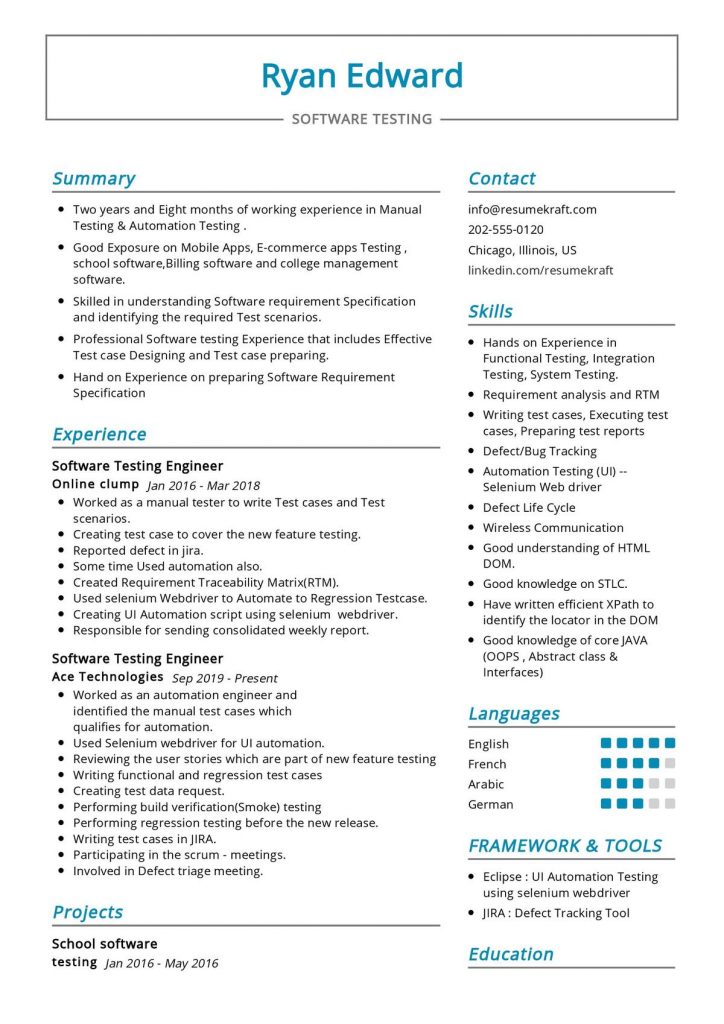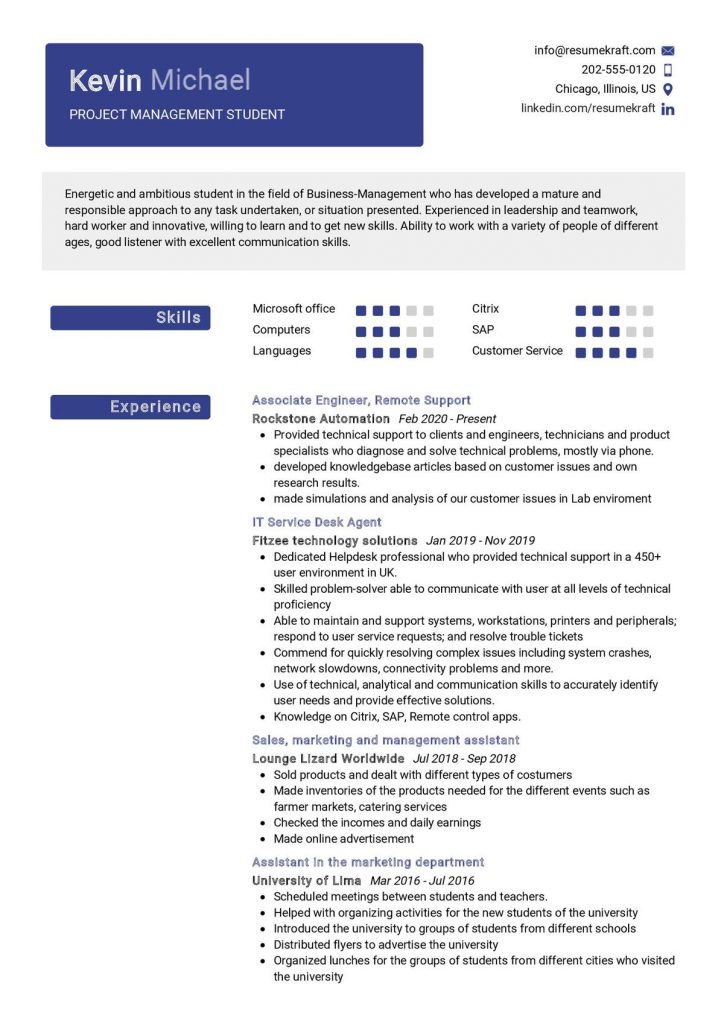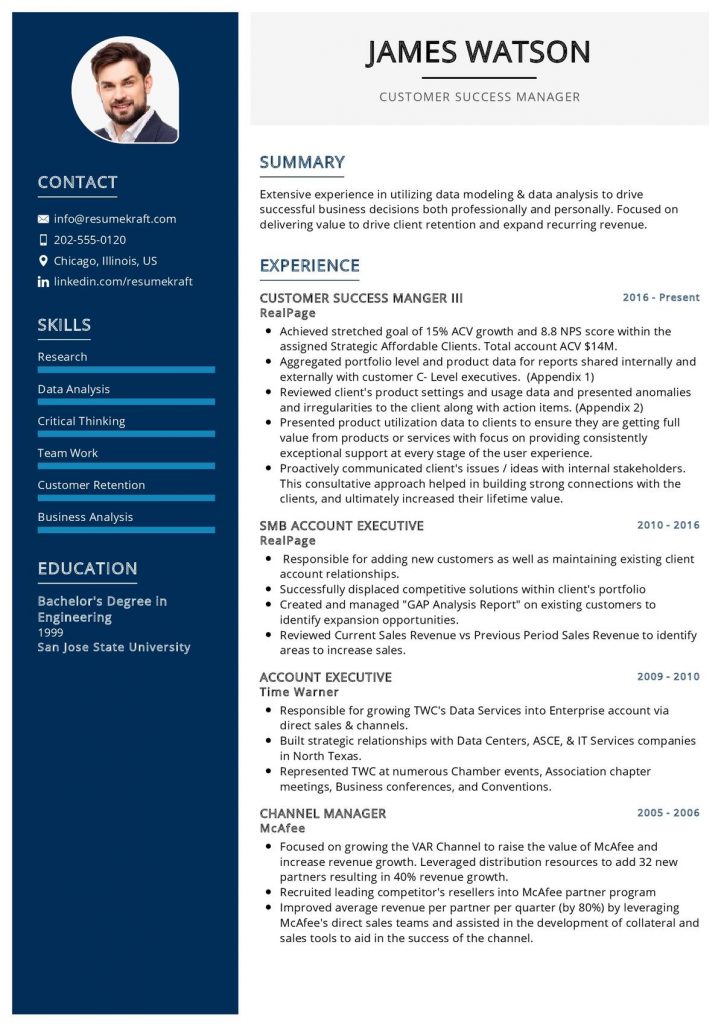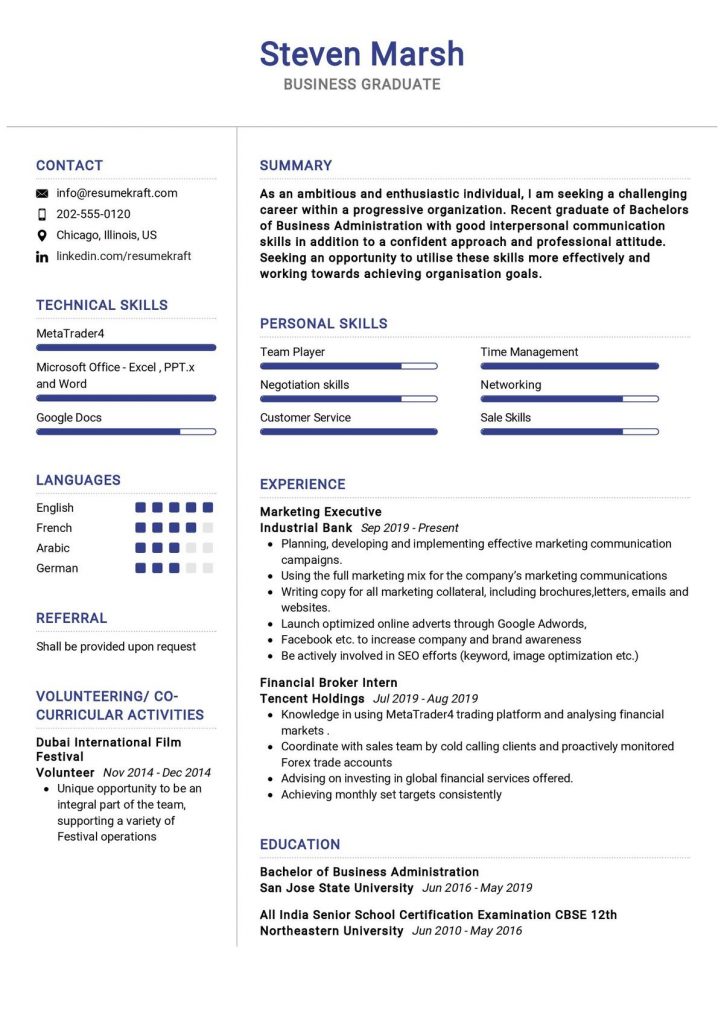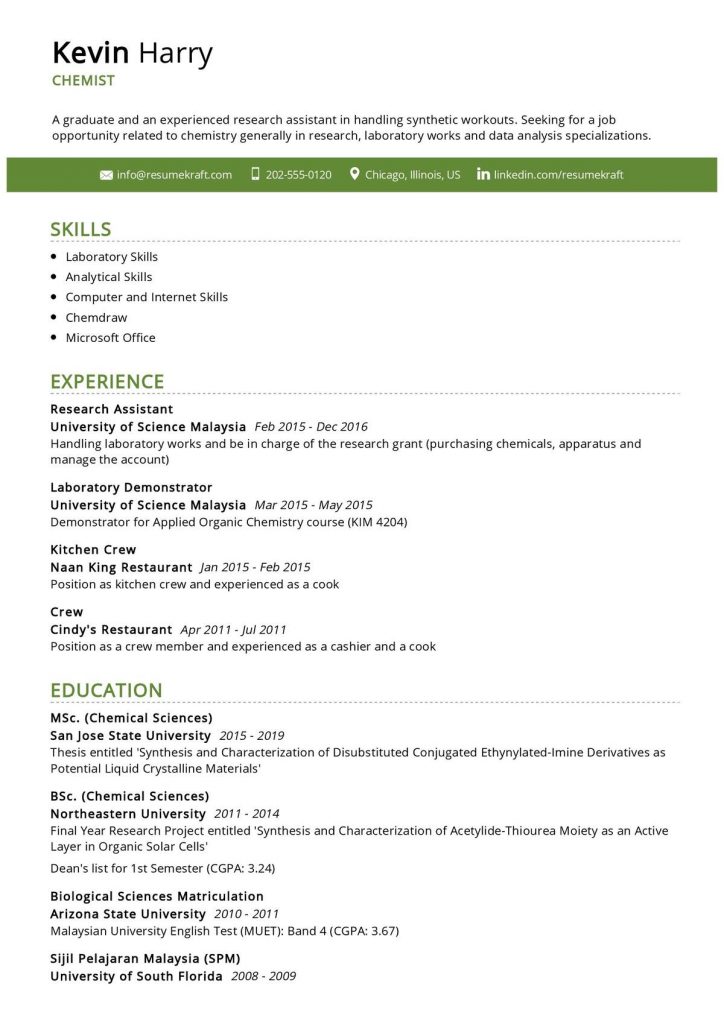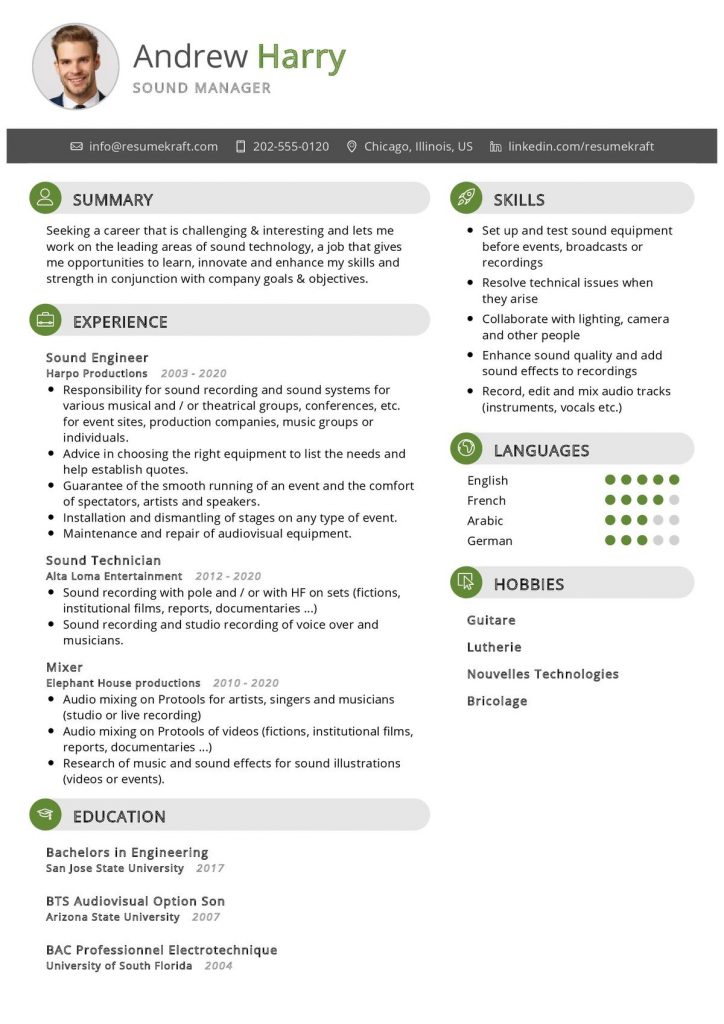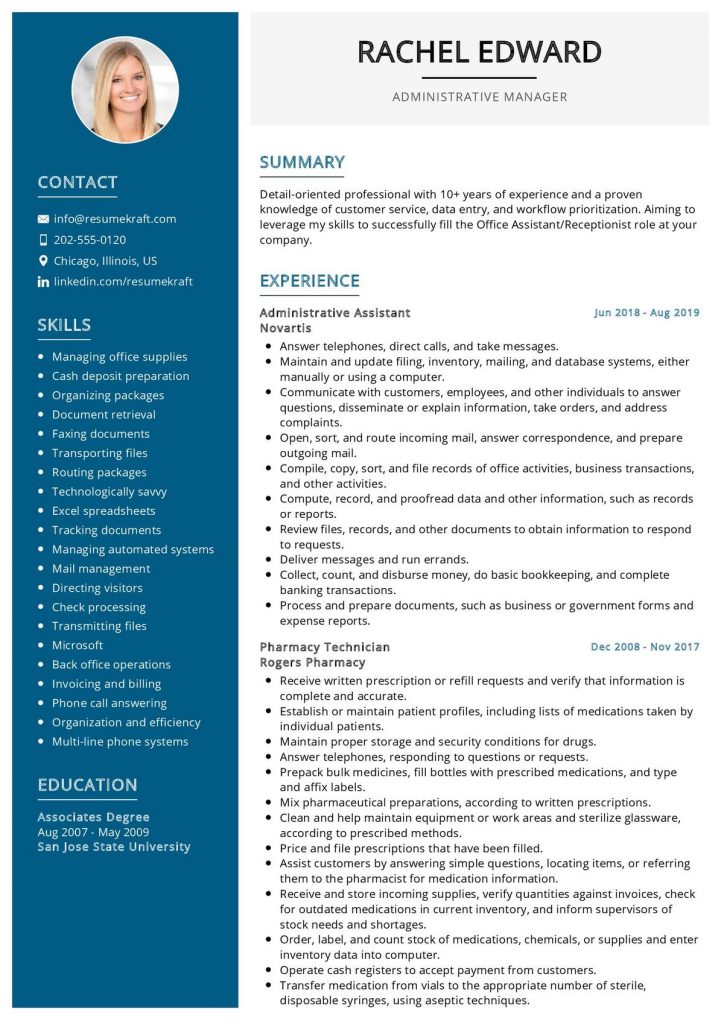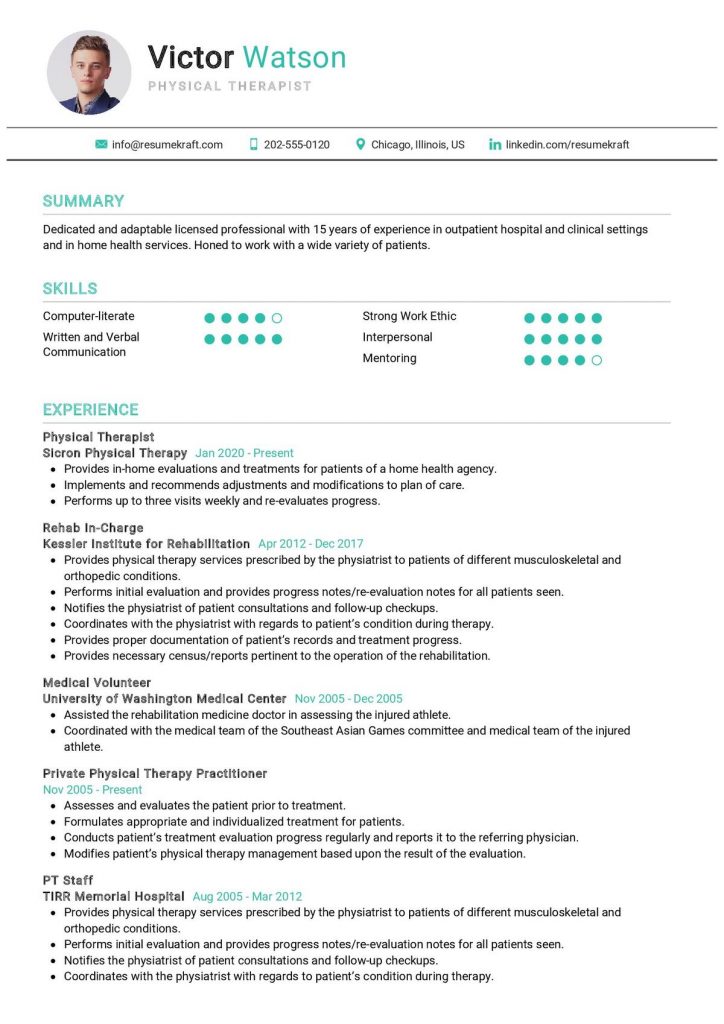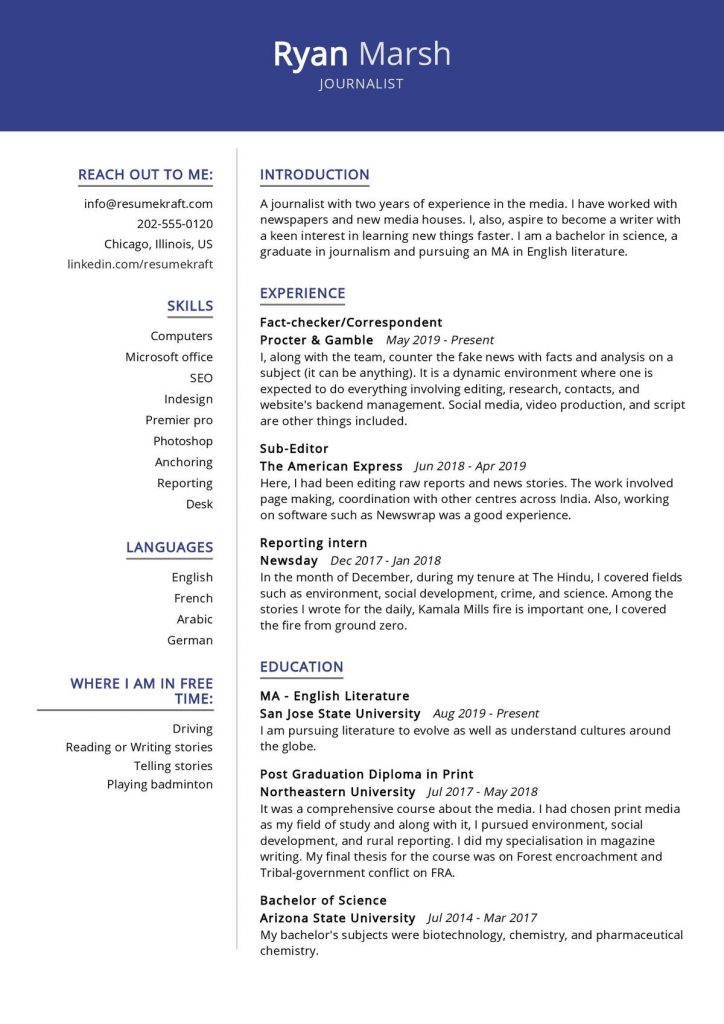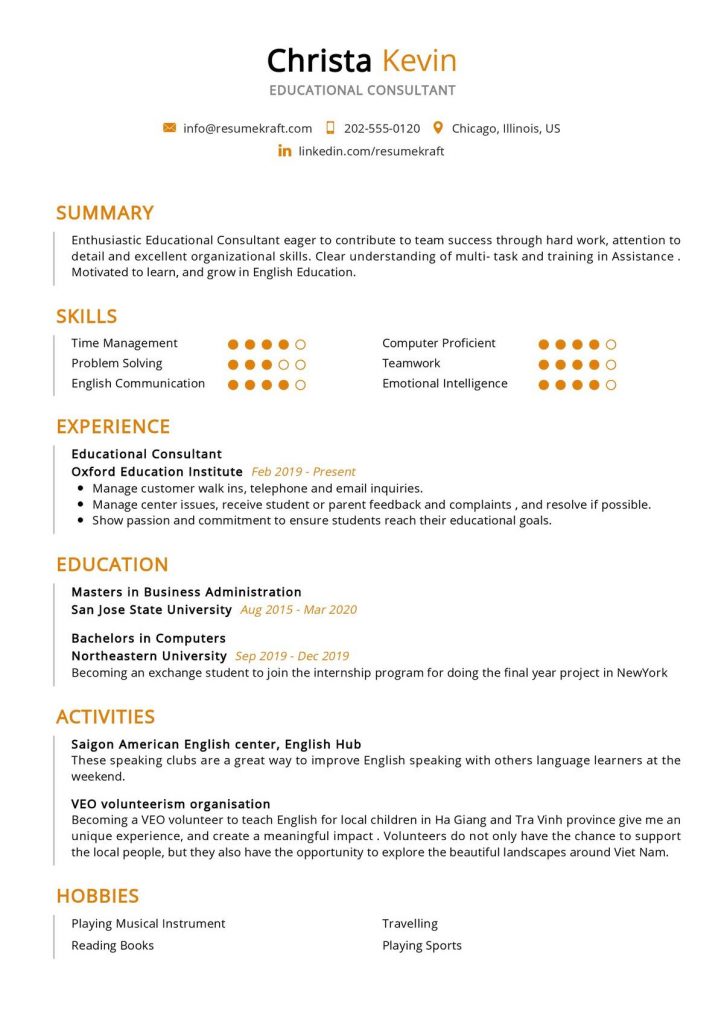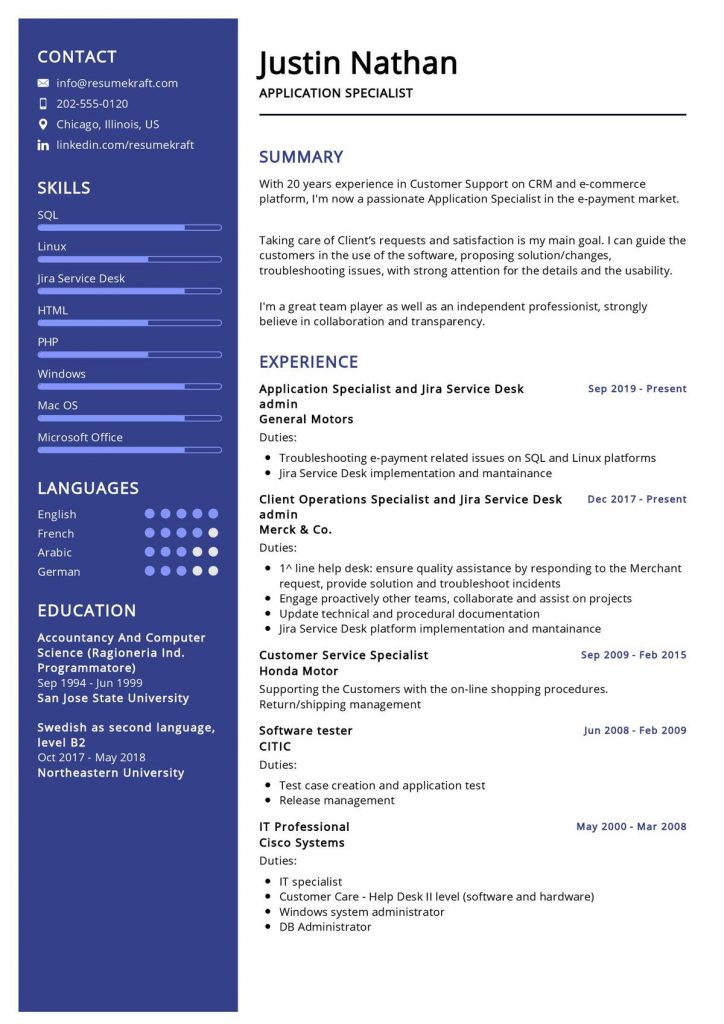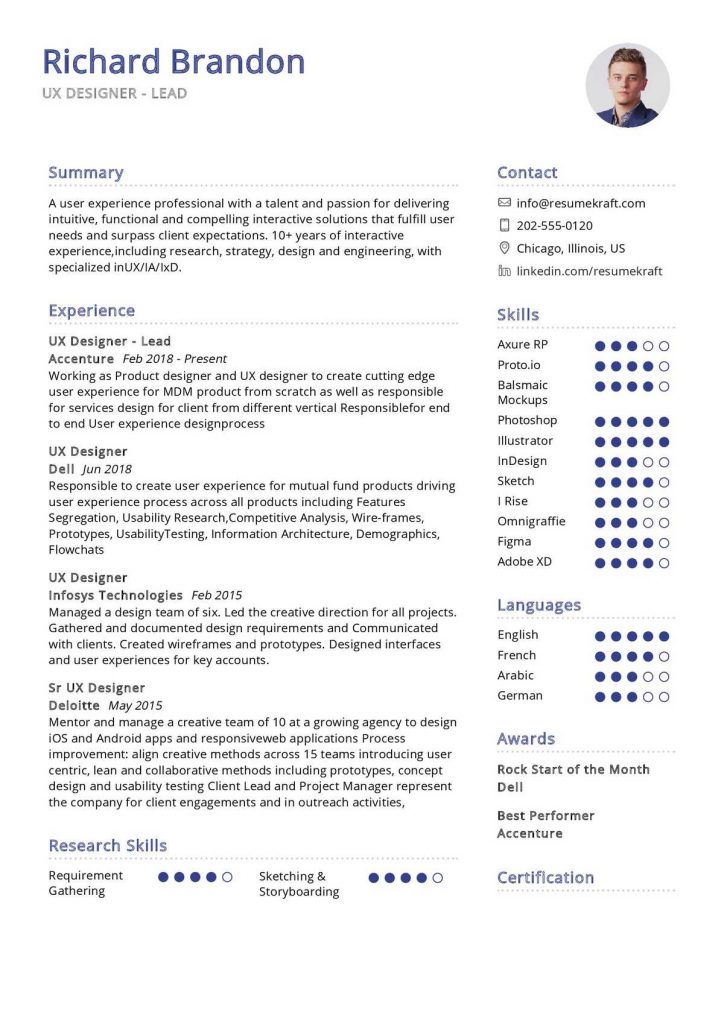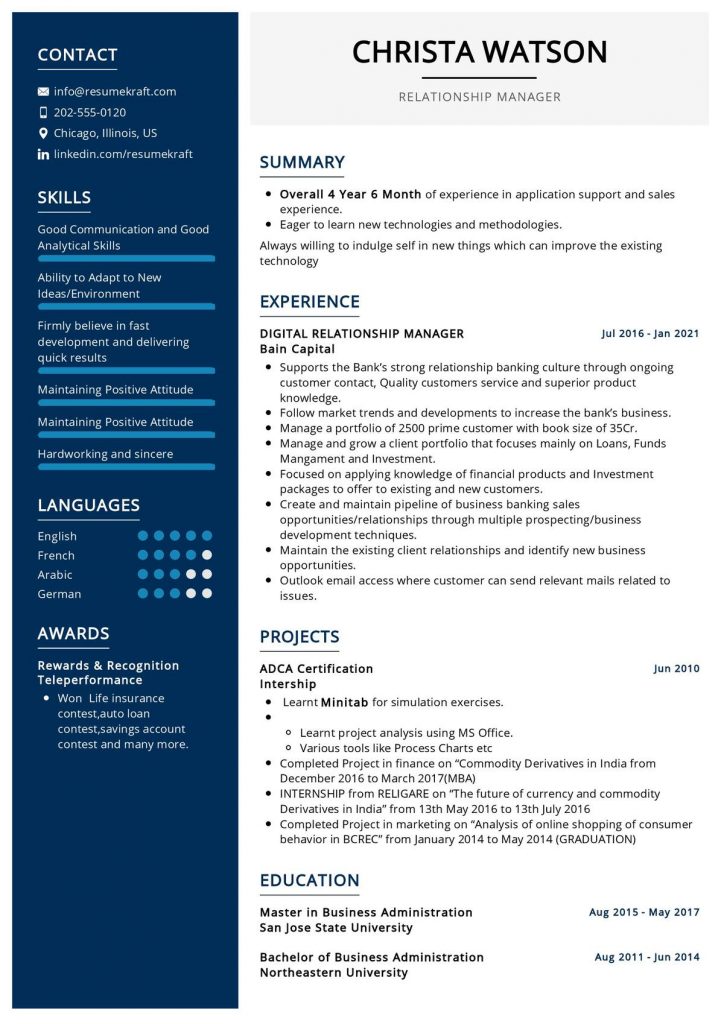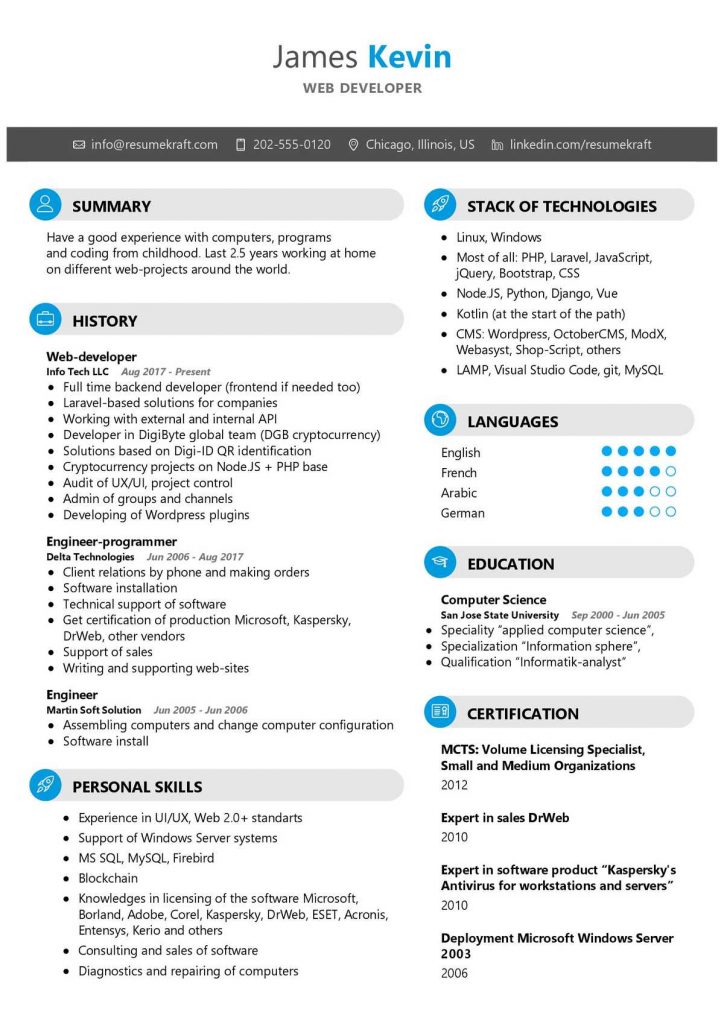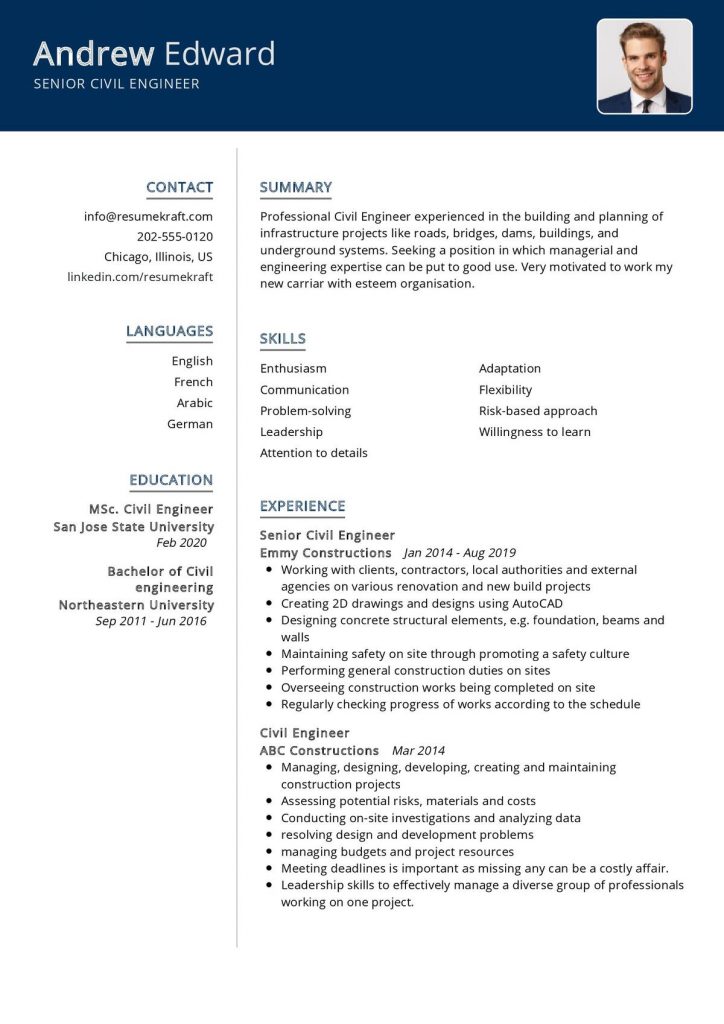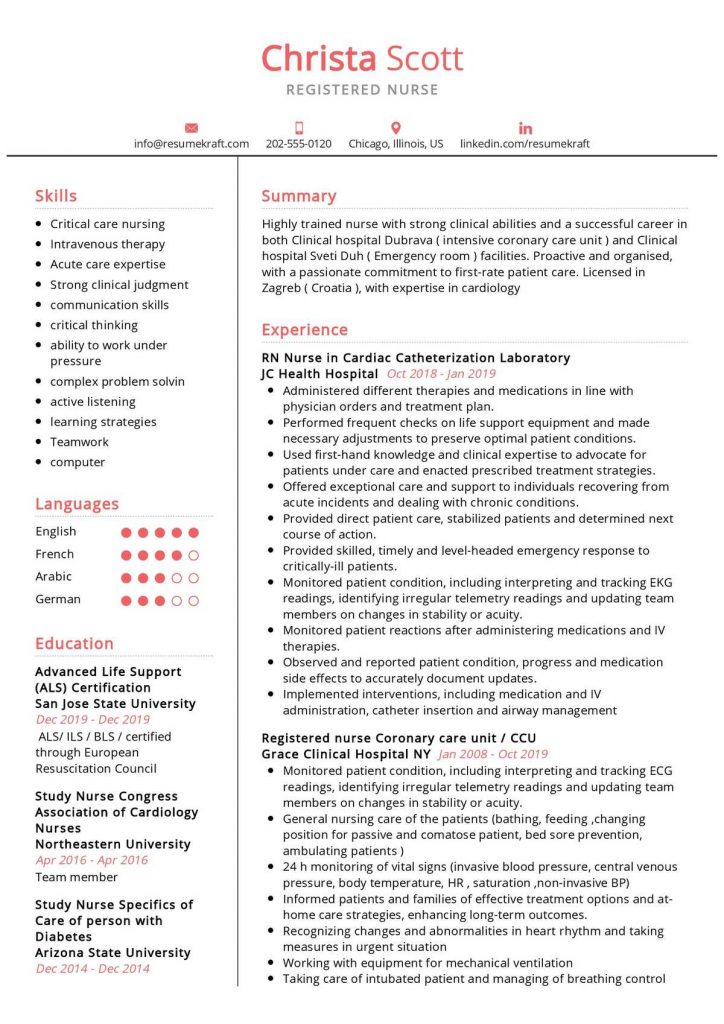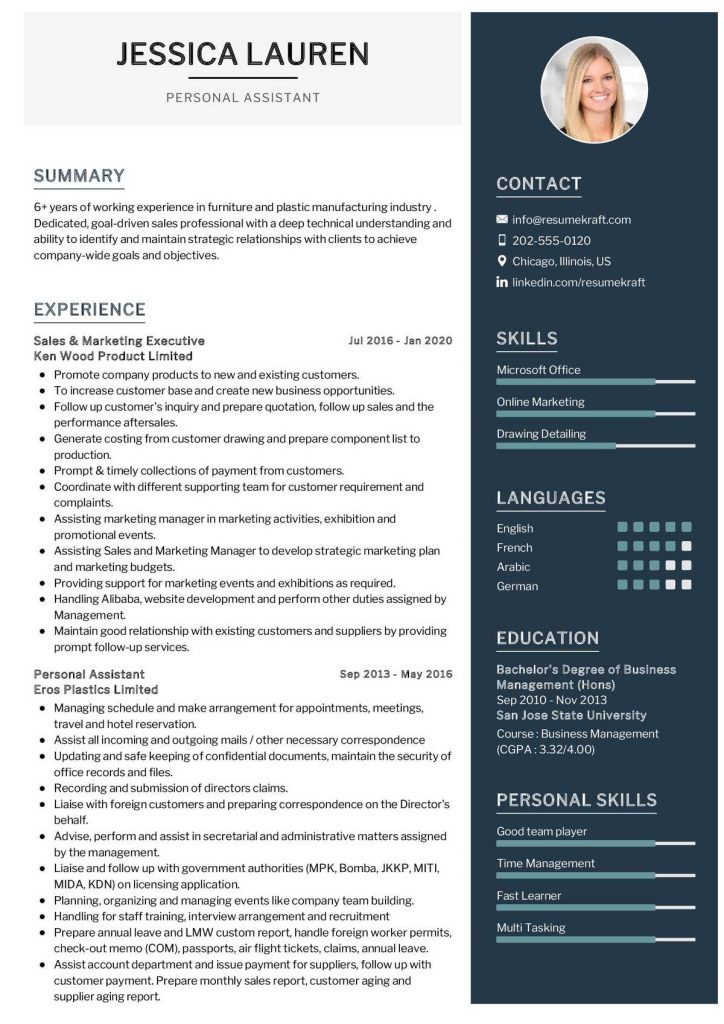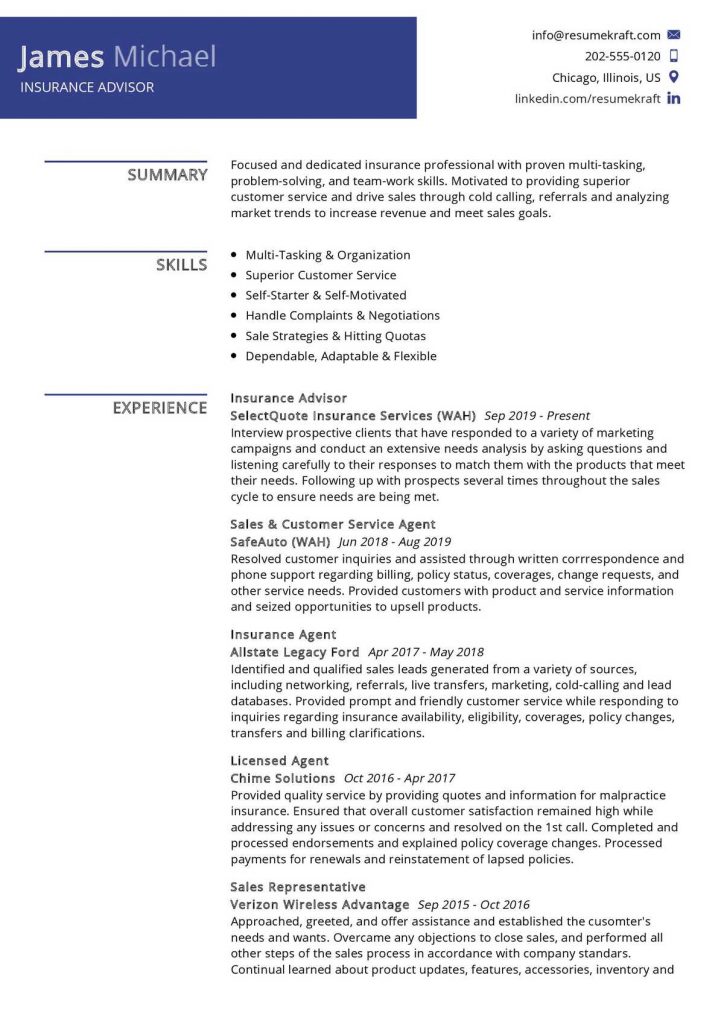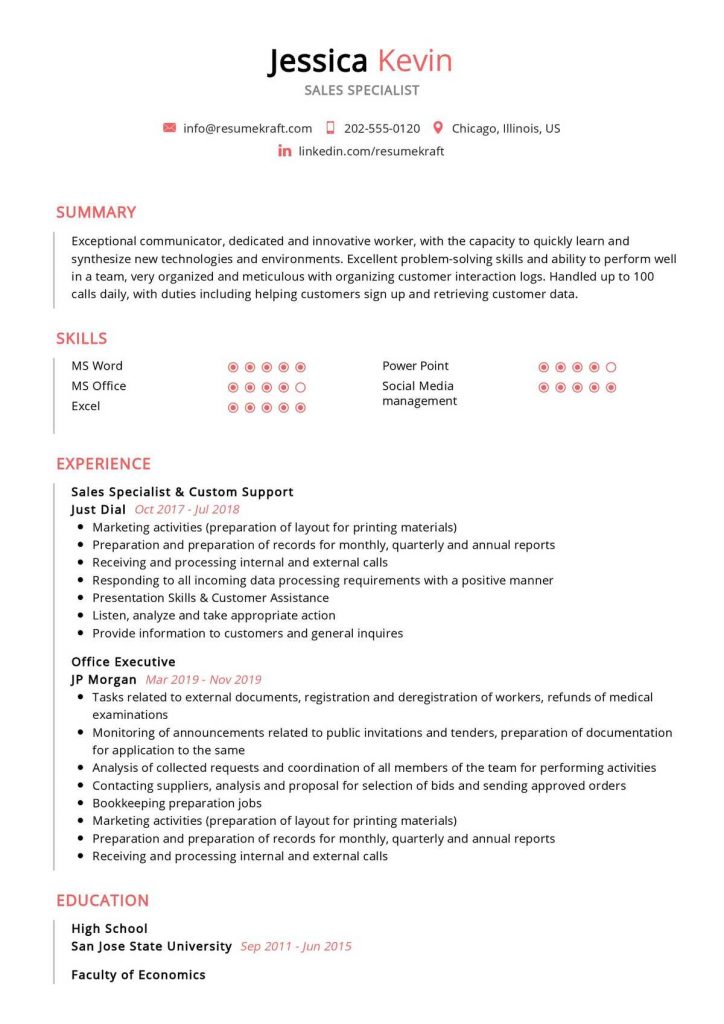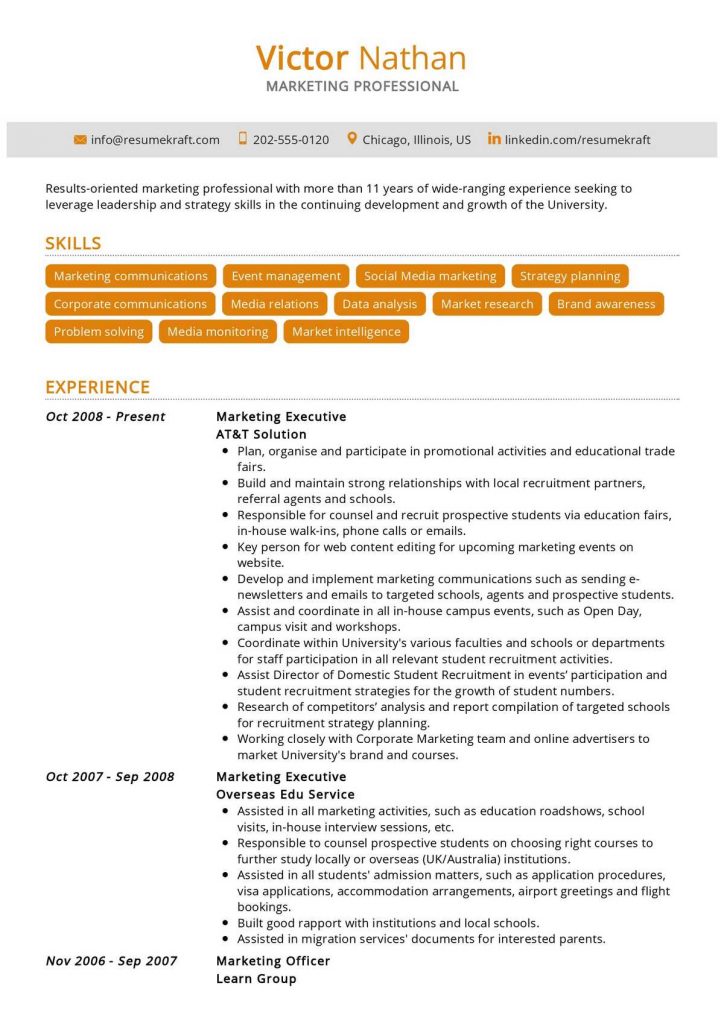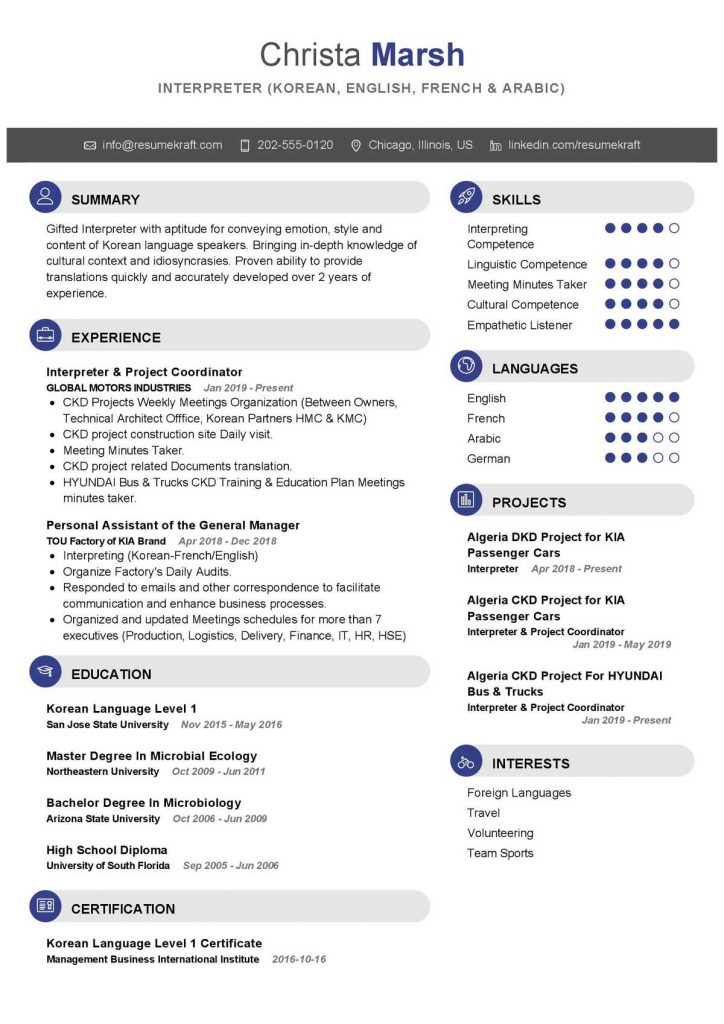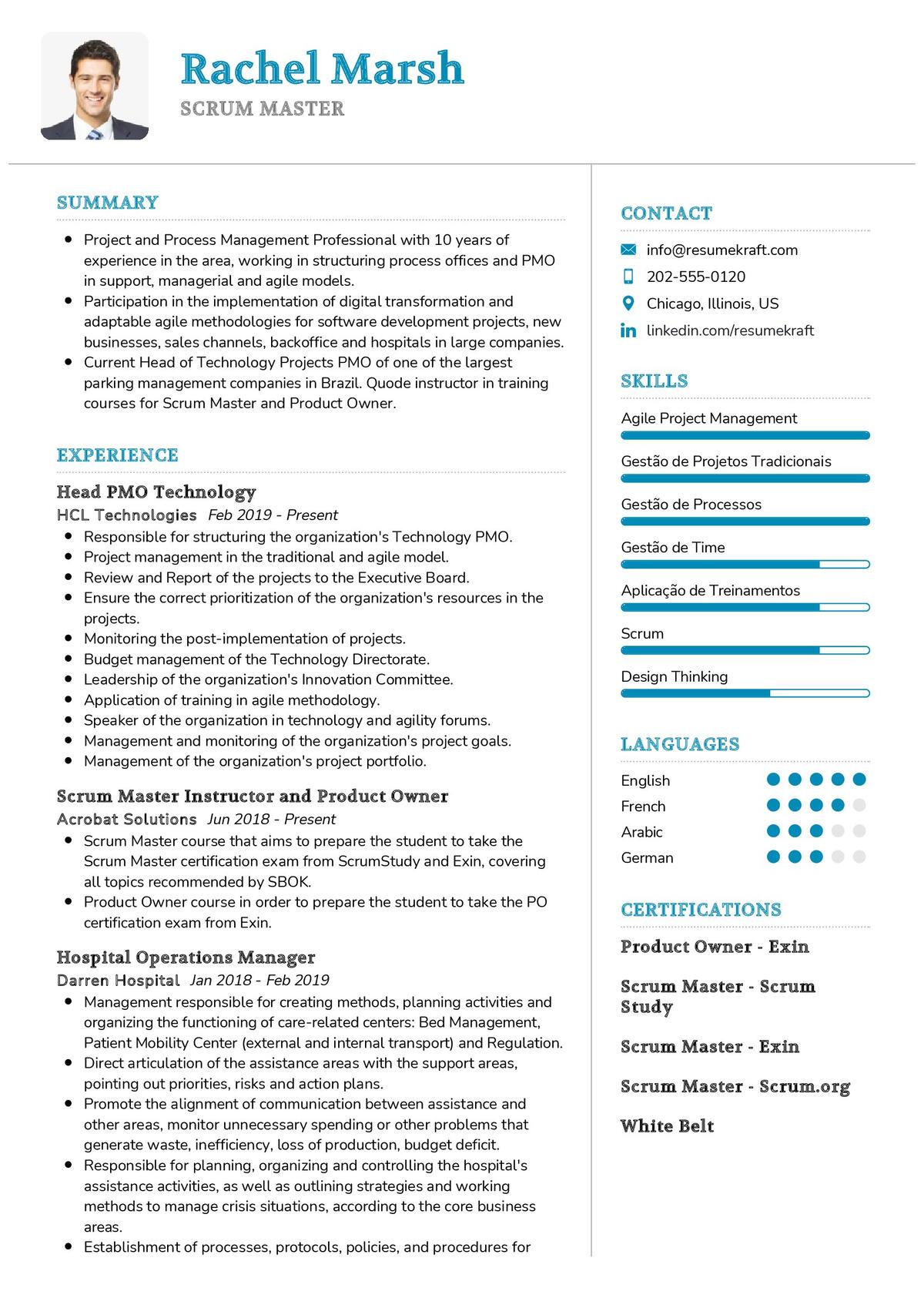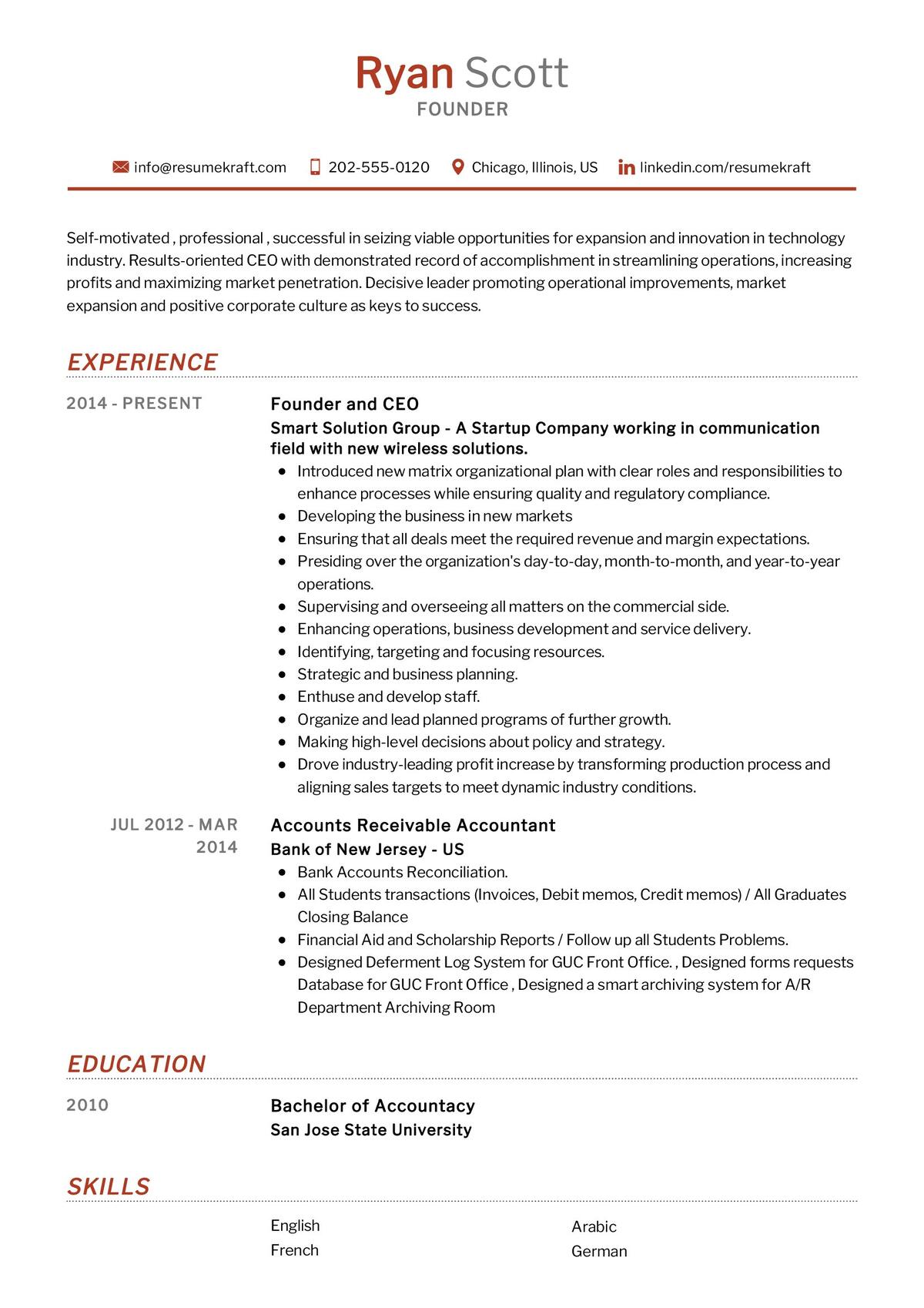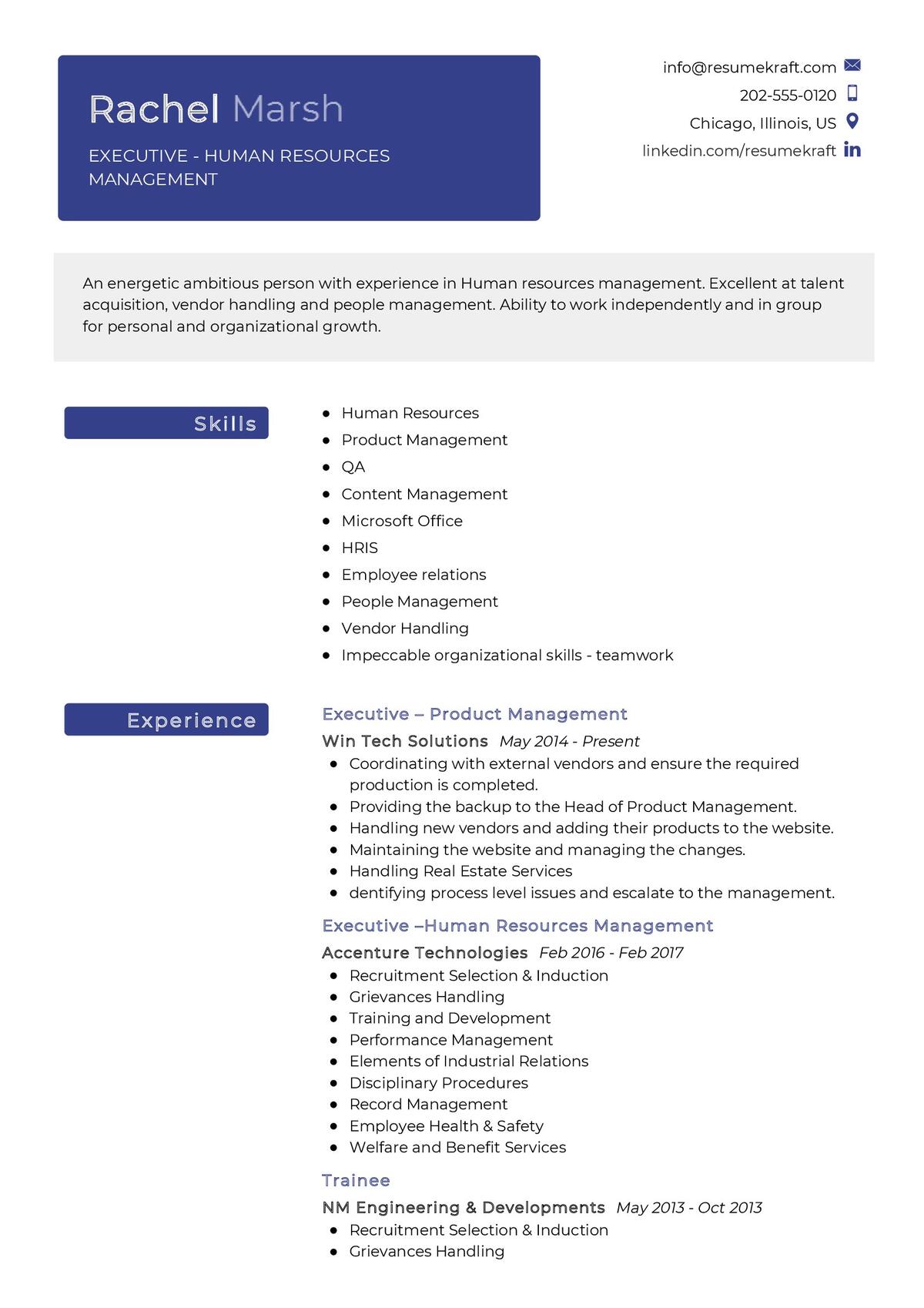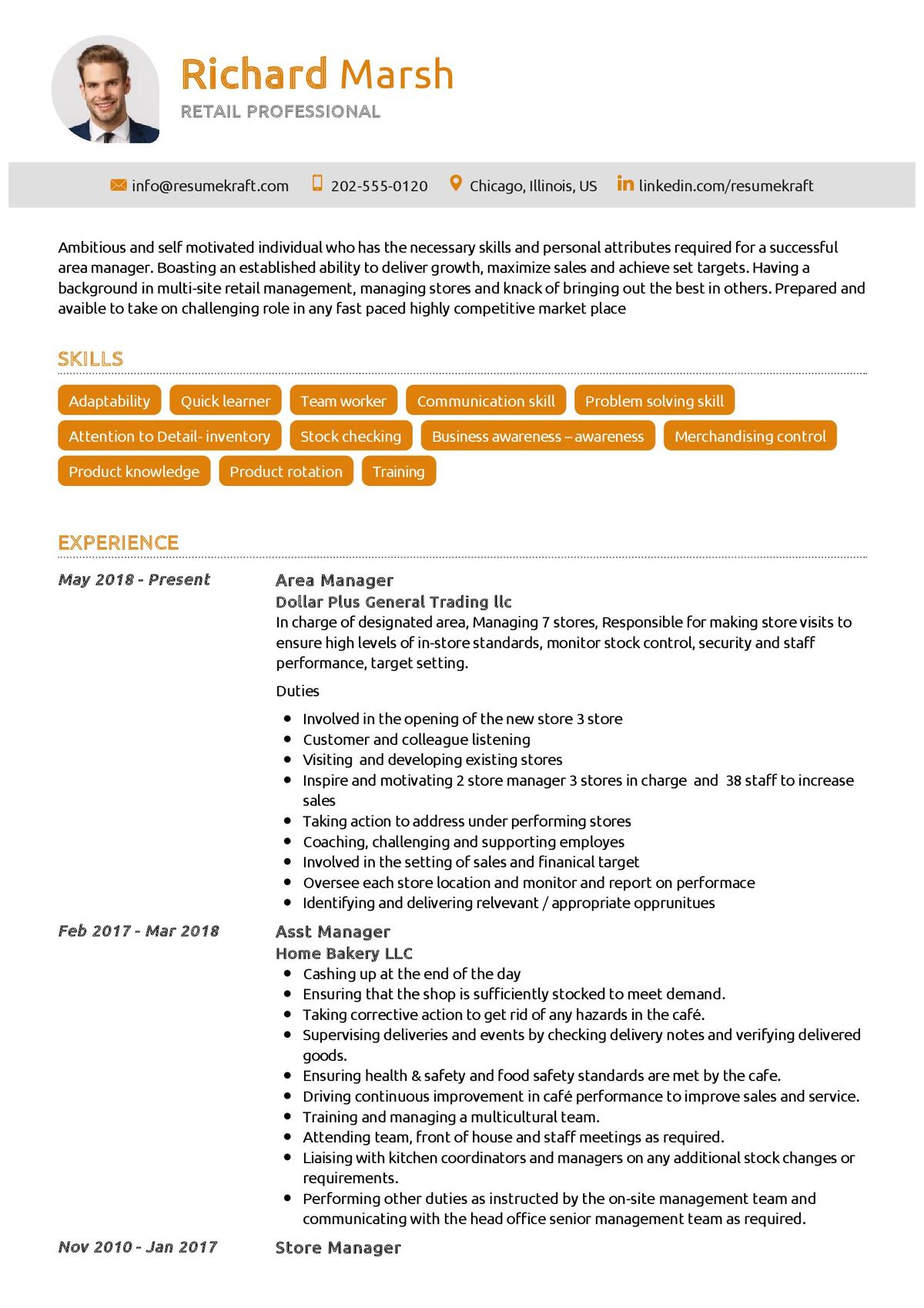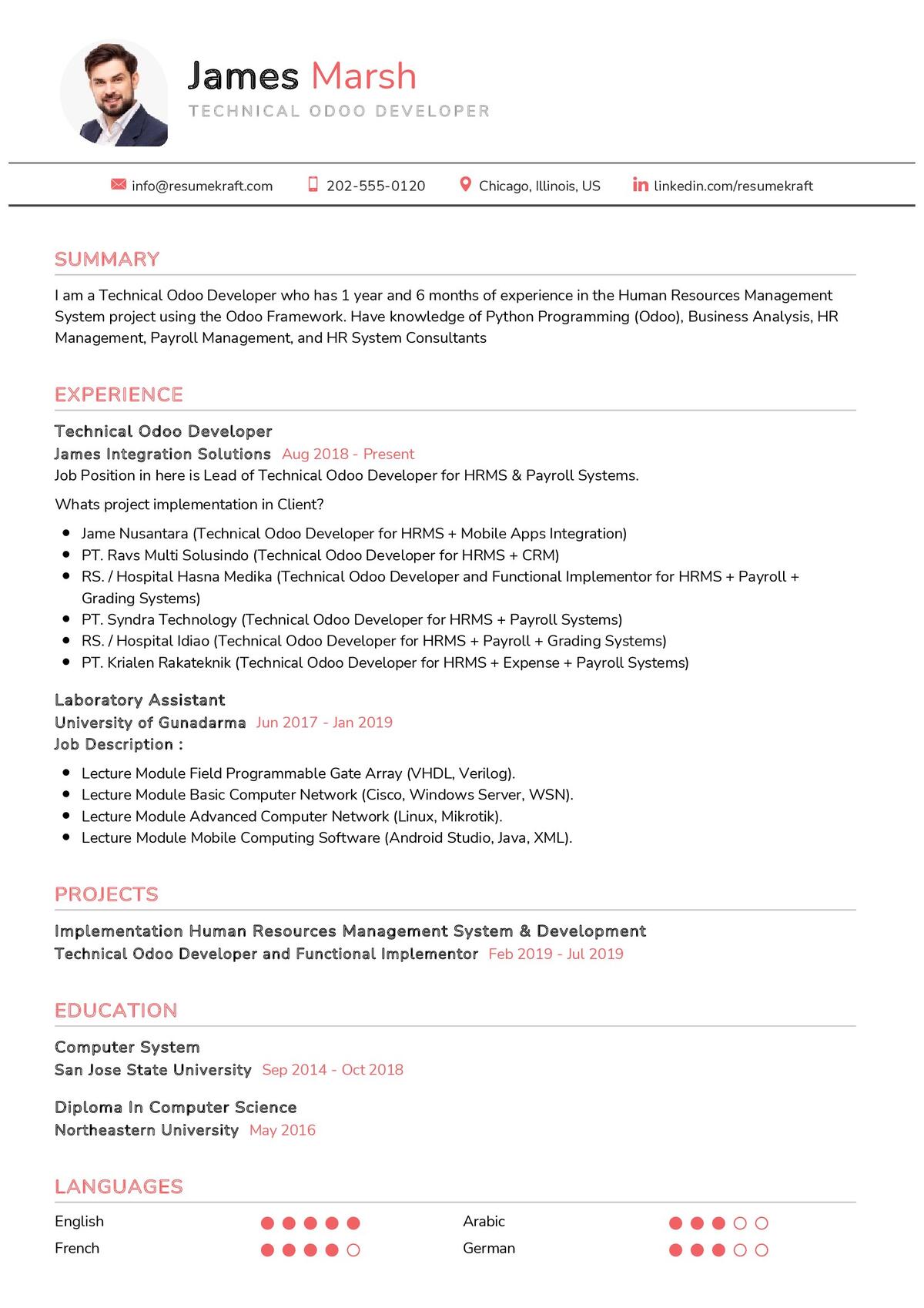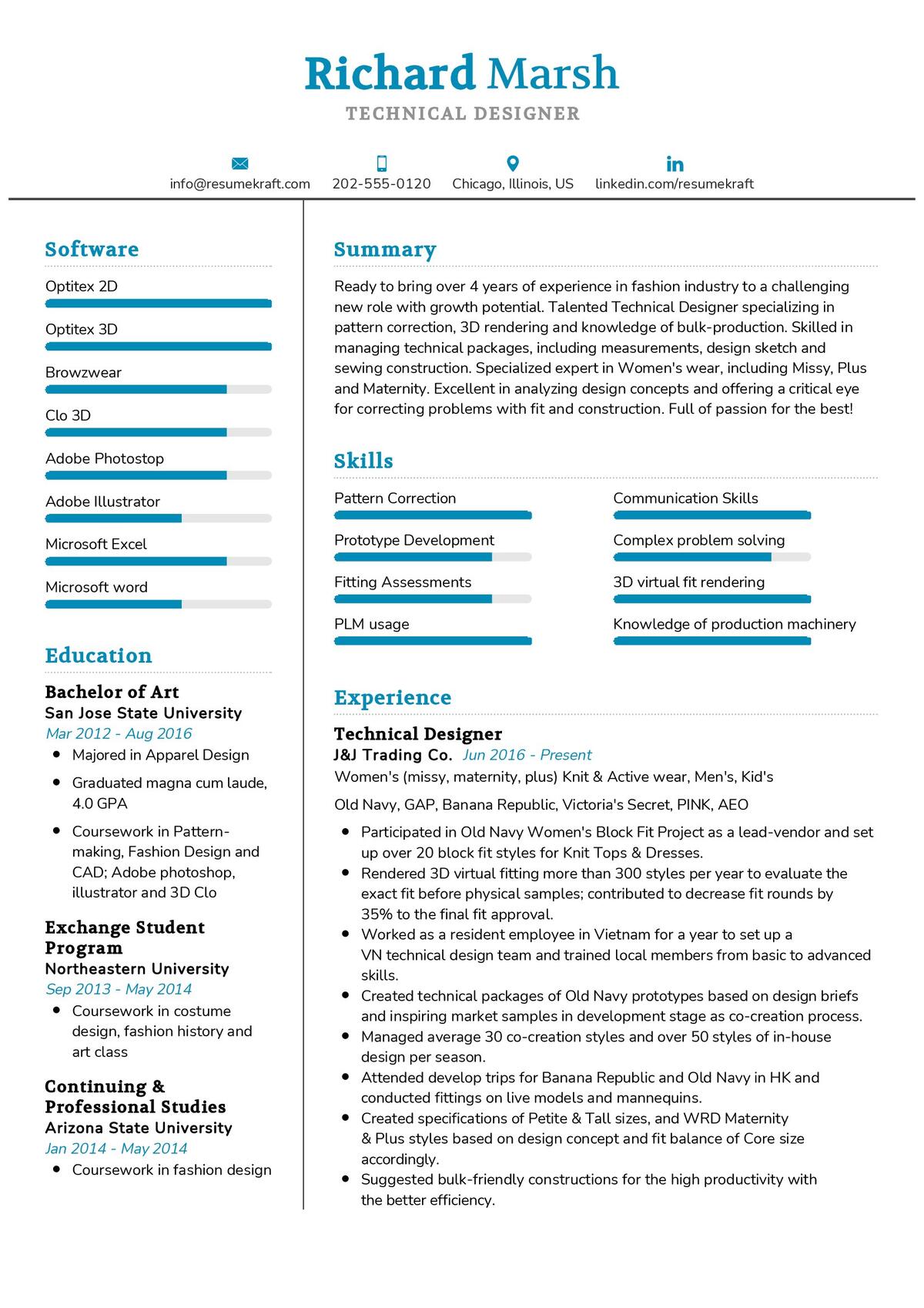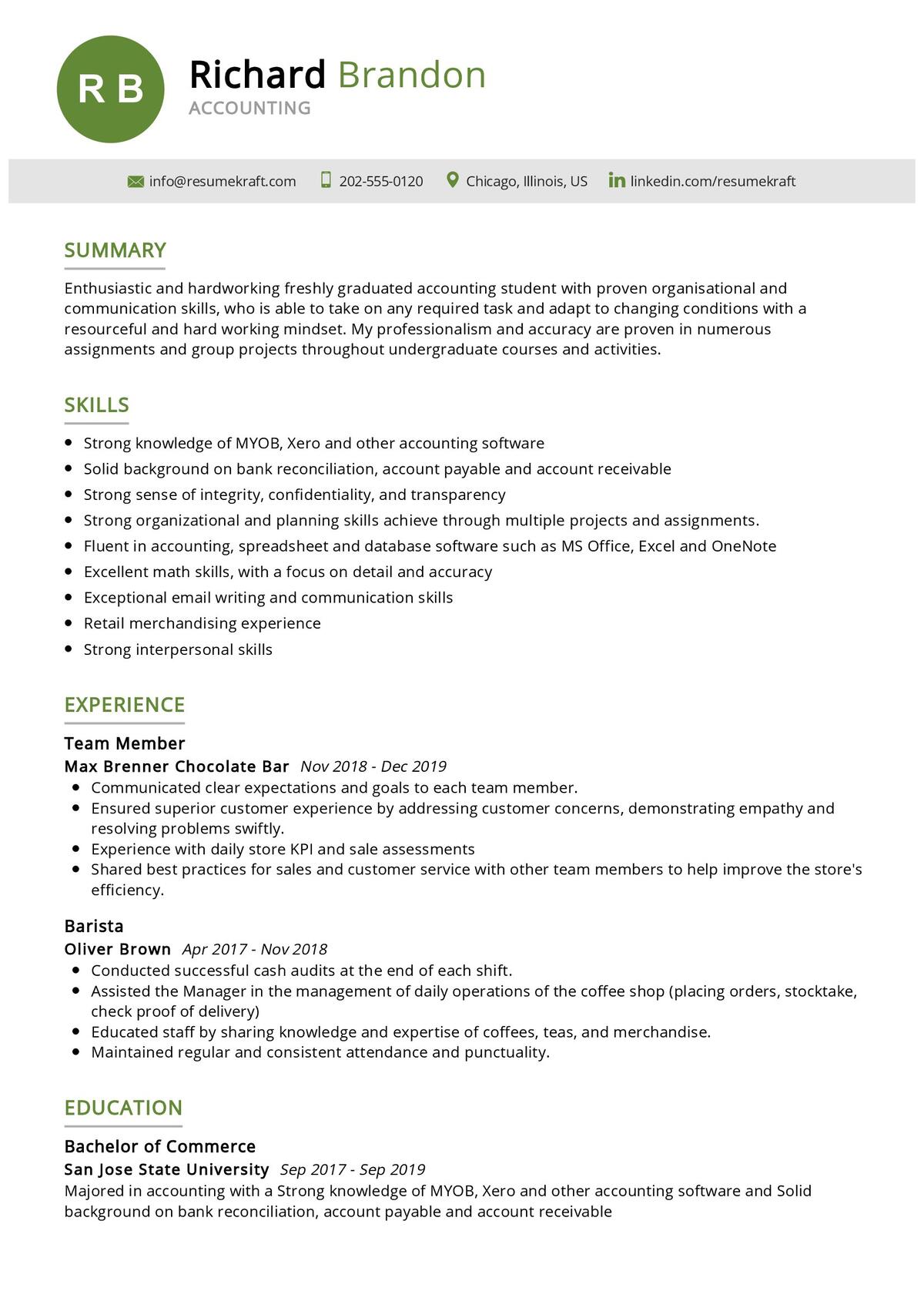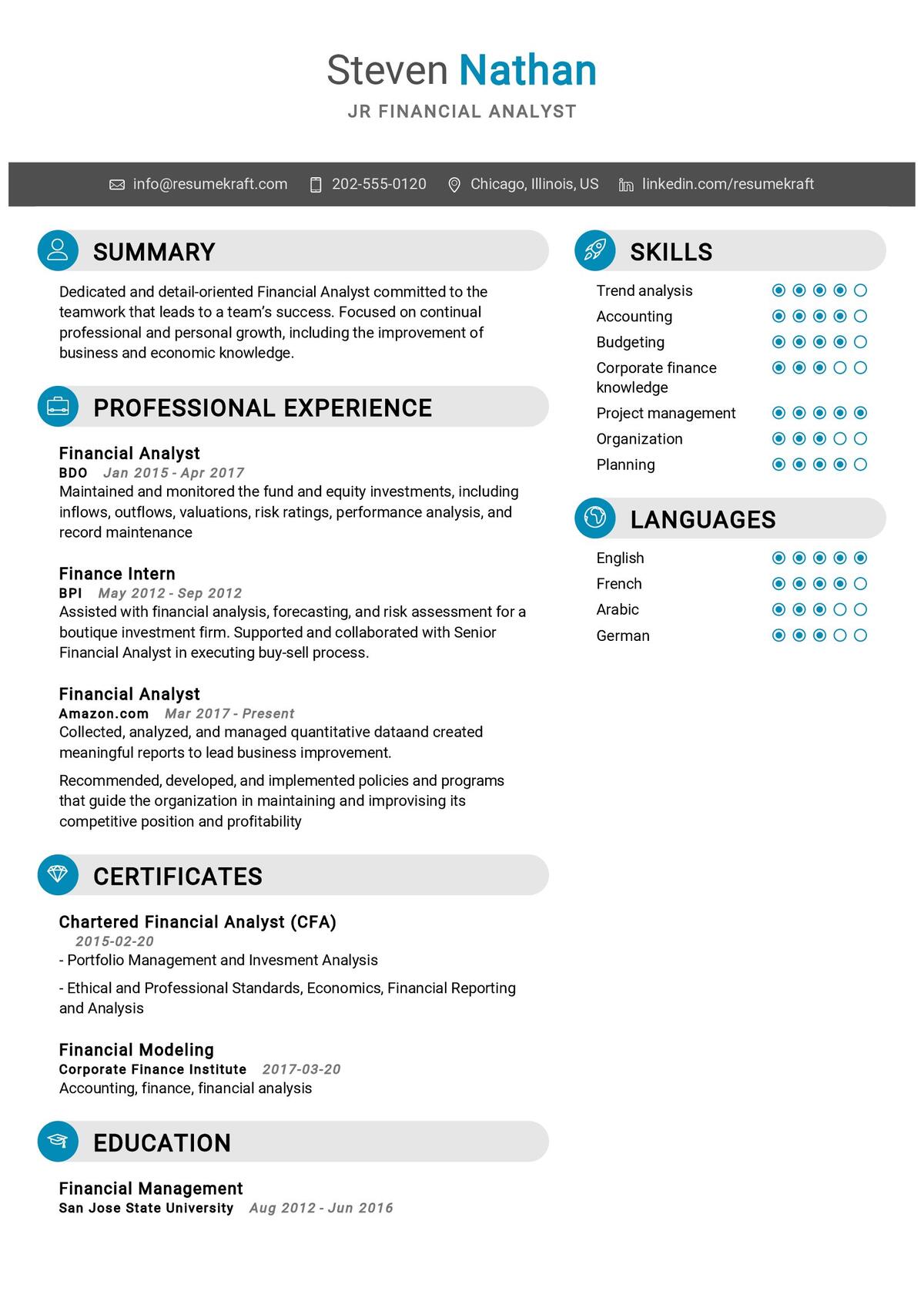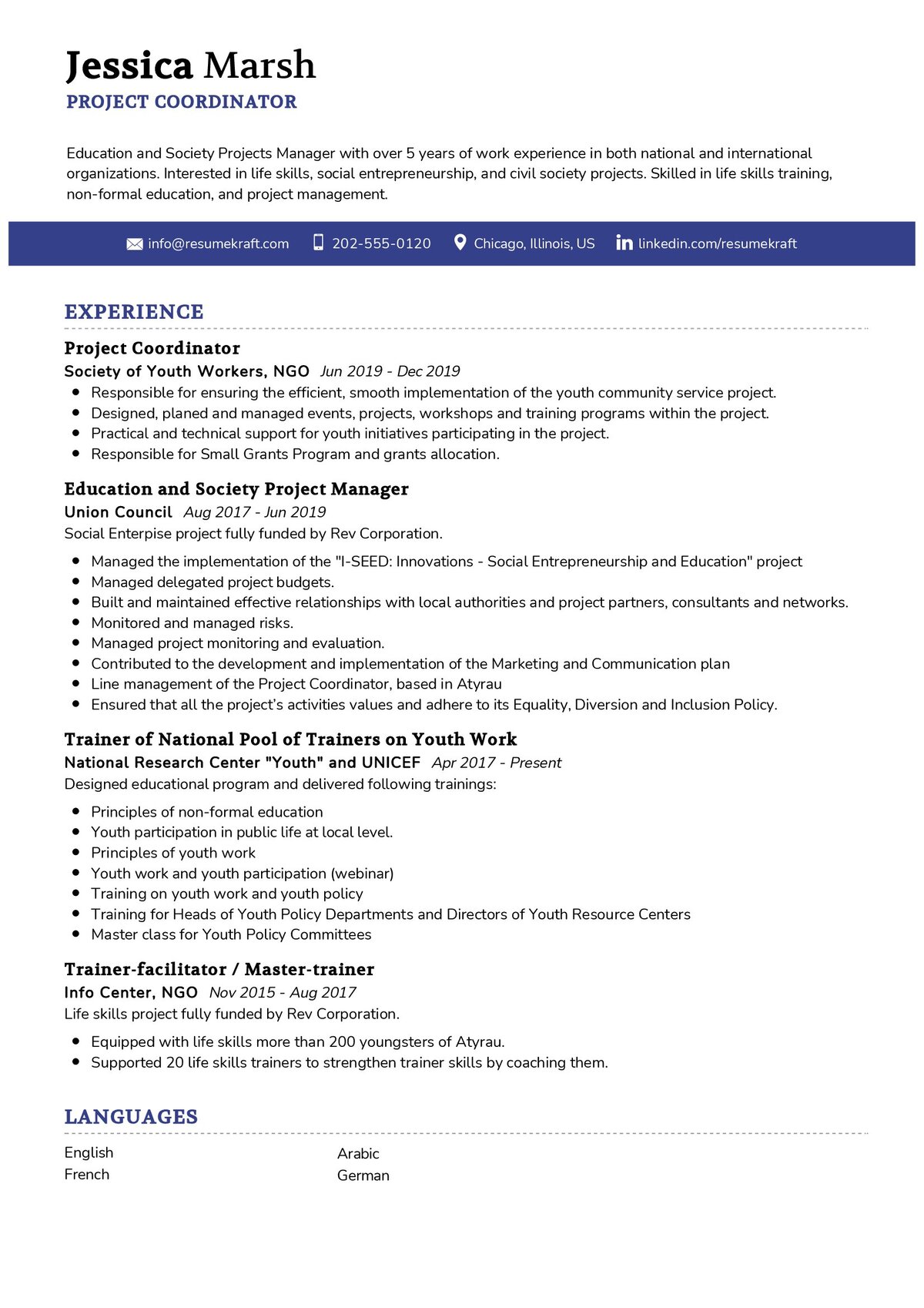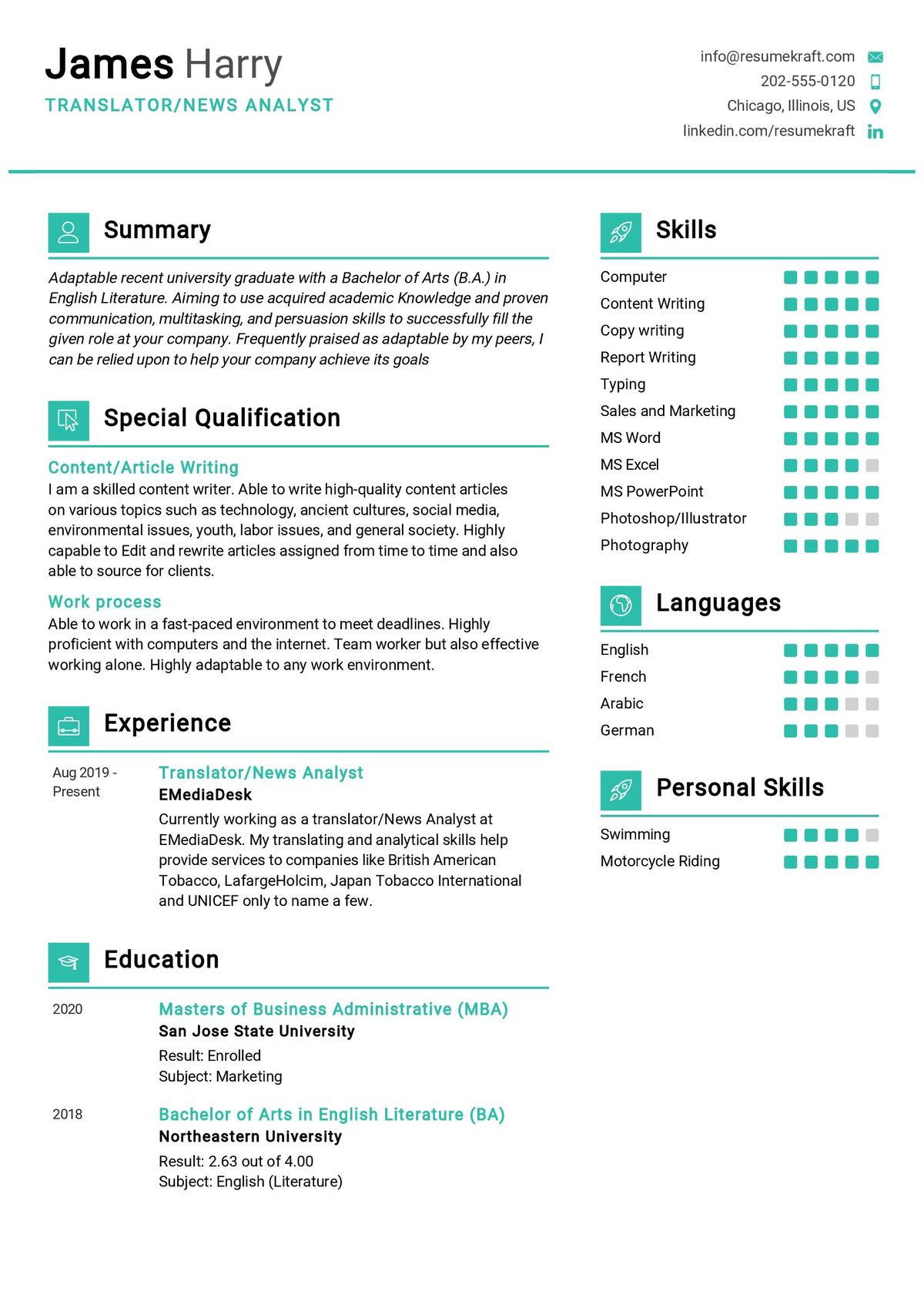
CV Format Guide With 18+ Examples and Tips
Writing a CV becoming more and more crucial with each passing day, it’s no surprise that there is so much information to be found online about what goes where in the modern-day CV. With this lack of direct instruction and guidance, we’ve put together a comprehensive guide so that you can get started on your dream job as soon as possible.
If you need to write a CV in the best format, there are a few things that you’ll need to keep in mind. The layout is really important as it should be easy to read and follow and your information should be concise and clear. You also need to make sure that you make good use of the white space on the page, and that your design is visually appealing.
What is a curriculum vitae?
A curriculum vitae, or CV, is a document that contains your personal information, education and employment experience, awards and recognitions as well as any research work you may have done. It can be used in order to help an individual land an interview with potential employers or to provide references when asked.
How do I write a good CV?
To have a productive and successful career in most fields of employment requires that you enter the world with an impressive resume. When writing your CV, there are a few things you need to keep in mind before going any further.
First and foremost, make sure that all of the information you are providing makes sense in a logical order. For example, if you have worked for two different organizations in which you have learned firsthand about quality assurance, then this experience should be listed first and it should be placed right before the latest position you have held.
Second, always include contact information. [This can include] a phone number, a website address, and/or an email address. This will allow employers to get in touch with you if they have any questions or concerns regarding your resume.
Third, try to keep your CV under one page long with one-half-inch margins on all sides.
And finally, be true to yourself and tailor every aspect of your CV to the individual prospective employer.
What is the difference between a resume and a CV?
A resume is a document that contains your professional experience. It states what you did during your time in the workforce and where you did it. It can also explain the skills and abilities you possess. A CV, on the other hand, is a document that contains your personal information, education and employment experience, awards and recognitions as well as any research work you may have done. It can be used in order to help an individual land an interview with potential employers or to provide references when asked.
| Resume | CV |
| A resume is a short document that is focused on the specific employer you are targeting. It can be one page in length with one-inch margins on all sides | A CV, on the other hand, is a longer document that focuses on your experience and education. It can be two or three pages in length with two-inch margins on all sides. |
| A resume is aimed at a specific job. It outlines your skills, experience, and education—and it’s used when you want that specific employer to know what makes you qualified for the position. | A CV, on the other hand, is more of a personal document that can be used in order to gain new employers or provide references after an interview. |
| A resume is used to help you land the job | A CV can be used in both capacities. |
| A resume targets a single position and is customized for that position | A CV offers information on your entire career and can be used when applying for positions with different employers. |
What to include on a CV:
Your CV should include the following items:
- Personal Statement:
This is the short summary of yourself. This should include your academic and career history, education and achievements. Additionally, it should explain what you want from your career. It should also address why your potential employer should hire you for the position and how you plan to make a difference for their organization. - Contact Information:
Always include your contact information at the top of your resume. This can include a phone number, an email address and/or a website address. This will allow employers to get in touch with you if they have any questions or concerns regarding your CV. - Professional Experience:
Include the job titles you have held, as well as a description for each. Also include your dates of employment and company name. - Education:
Include the degree(s) you received and every class you have taken throughout your academic career. Remember, it’s better to first list every single class you have taken than fail to include all of them. If you have taken a few classes and they don’t contribute to your career field, then this should be noted with a note explaining why the class was taken. - Professional Skills:
This section should include skills that could help you in the specific job for which you are applying. This can include computer programs that you are familiar with, languages you speak and any special licenses or certifications. Keep in mind that your CV is meant to highlight all of your strengths so don’t be afraid to boast a little bit. - Education Qualifications:
If you’re a recent graduate, make sure to include your educational background and degrees. This can also include any courses you have taken that are related to the position for which you are applying for. If you are further along in your career, you may want to list the number of years of experience in your previous positions as well as any special certifications you may have. - Awards and Achievements:
Include any awards and achievements you may have received throughout your academic and professional career. These can include, but are not limited to: grants, scholarships or awards for academic, research or professional achievements. Remember to list any projects you may have worked on along with the name of the project as well as the company name where you worked. - The References Section:
This is what employers usually ask for when they receive a resume. This section will allow them to get in touch with your previous employers and learn more about your background. Employers usually want to know as much information about your experience as possible, so make sure you are providing as much detail about each position you have held. - Publications:
If you have written any published works or papers, it’s important to list them here along with information about the publisher, year and name of the article (if applicable). - Licenses and Certifications:
If you have certification or professional licenses, make sure to list them here along with the expiration date. Also, keep in mind that employers can request verification of your credentials if they are unsure of your experience. - Languages:
If you are bilingual, include the languages in which you are fluent along with the date(s) you spoke each language in and your name(s) when speaking both languages. If you speak a different language other than English and Spanish, list the two most commonly used languages that make up your first language. - Interests or Hobbies:
This section is usually not included on a CV, but it is usually a standard practice for resumes. Employers like to know what your interests are and how they can connect with you outside of work. Feel free to list any clubs or organizations that you may belong to, along with the name of the club and your title as well as any volunteer activities or involvements that coincide with your career field. - Additional Information:
In addition to the sections listed above, you may also want to include any additional information that is pertinent to your career. For example, if you are applying for a job in finance, your CV can include how well you can handle numbers or formally learn about financial concepts. You may also want to include information about your volunteer work or extracurricular activities if they have any connection with the position for which you are applying.
How to write a CV
- Choose the right font type and size:
When choosing the font, keep in mind that it should not be too large or too small. You do not want to use a font that is so small that the reader can’t read it. - Keep paragraphs short and simple:
You will need to break up your CV into different sections so that your reader can easily find what they are looking for and understand how your experience relates to an area they may be interested in. - Keep it to one page:
You need to present your information in a concise way so that the reader is able to get a good feel for who you are and what you have to offer. If you exceed this page limit, then it may make you look disorganized or unfocused. - Use action words:
While you don’t want to use too many bold words or exclamation marks, you do want to show enthusiasm in your document. Using active verbs allows you to do this without coming off as unprofessional. - Make sure that all of the information is up to date:
Any time that you make a significant change in your life, such as changing jobs, getting married, having a baby or buying a new house, it is important that you make sure your CV reflects those changes. - Proofread:
Check your document for spelling and grammatical errors. You may even consider having friends or family members look it over before you send it to a potential employer. If you have any concerns, then contact the HR department at your potential employer to let them know before you submit your CV. While this may seem like common sense, many people will overlook this part of the process in their rush to get something out. A CV is an important document in your career and should reflect that. - Make a copy:
Update your resume and send a copy to every prospective employer you have on your contact list. This will allow you to keep in touch with them as they consider your application and will allow them to see how committed you are and whether or not they think you would be a good fit for the job. - Don’t use all caps:
Using all caps is considered poor form and is generally frowned upon by employers. Using normal, eye-readable font types will prevent your resume from being overlooked. - Be honest:
Make sure that everything you write in your CV—and your interview—is true to yourself. If you have misrepresented yourself, then you could be looking for a job that no longer exists or a place where they won’t hire you based on the information you provided.
Tips for writing a CV:
- Read through the job description for each position you are applying to and make sure that you include the qualifications they are looking for.
- Be specific: If you have had any affiliation with an organization, such as the Rotary Club or a university club, then indicate what role you played in it if it is relevant to the job for which you are applying.
- Create a narrative: Instead of just listing your experience in chronological order, try writing your CV as if describing an event or story. This will make your resume more dynamic and will keep things interesting for your reader.
- Use action words: When writing your CV, use words that show your enthusiasm for the position you are applying for. This will help you capture the attention of the reader as well as make it more likely that they will contact you if they are interested in an interview.
- Proofread: You need to proofread everything you send out any time that you are sending a document directly to someone—especially a potential employer. If there are any mistakes, then you can be sure that the reader will catch them and they will want to contact you for clarification.
- Be professional: Always use proper punctuation, grammar and spelling when writing your resume and CV. If you do this, then it will show that you have good writing skills and are someone worthy of the position you are applying for.
- Keep it short: You don’t need to include every single detail of your life in one document—keep it to one page at most. If you feel like you need more space, then divide it into a few pages.
- Don’t use all caps: While it may seem appropriate to use all capitals in your CV, it is considered poor form and does not look good. Using only normal-sized letters and doing things properly will help you stand out from the other candidates who may be applying for the same position as well as from previous employers who have sent your CV on to new companies looking for employees.
- Be honest: If you have misrepresented yourself or made anything up, then you may not get the job or find yourself in a situation that is completely different from what you had hoped for.
- Avoid the overuse of acronyms: If you use acronyms, then make sure that they are easily understood by each reader that receives the document. It is impossible for someone to know what you are referring to if you do not include the meaning of the letters used right next to them.
- Stick to the facts: While you want to make your resume and CV different than everyone else’s when possible, you will need to stick to the facts. Don’t embellish or make up any part of your experience, because if someone does find out they will know that you have lied on your application.
- Write about accomplishments: If there is something specific that you did during your job that is relevant to the position for which you are applying, then include it in your CV and highlight it.
How long should my CV be?
A CV should be one page long, single-spaced, with .5″ margins on all sides. Do not make a second page unless you must because it is easy for a potential employer to skim over unnecessary information. If you can honestly and succinctly summarize your career and personal life experience into a single page, then you are more likely to have success in the job market. If you have a lot to say about your life and career, then consider writing a concise summary upfront and including an extended version of your life story in your cover letter.
CV Format Example Templates:
Here is the list of best CV format example templates for your reference. Please feel free to customize and download in PDF file format.
Manager CV Example

Data Officer CV Example
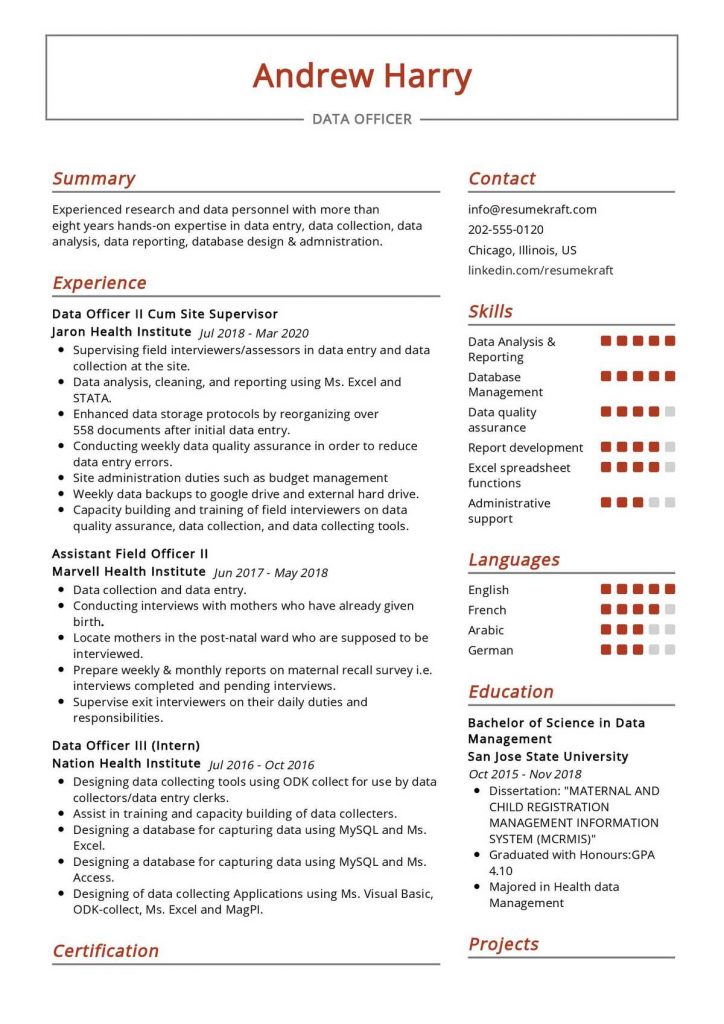
Business Consultant CV Example
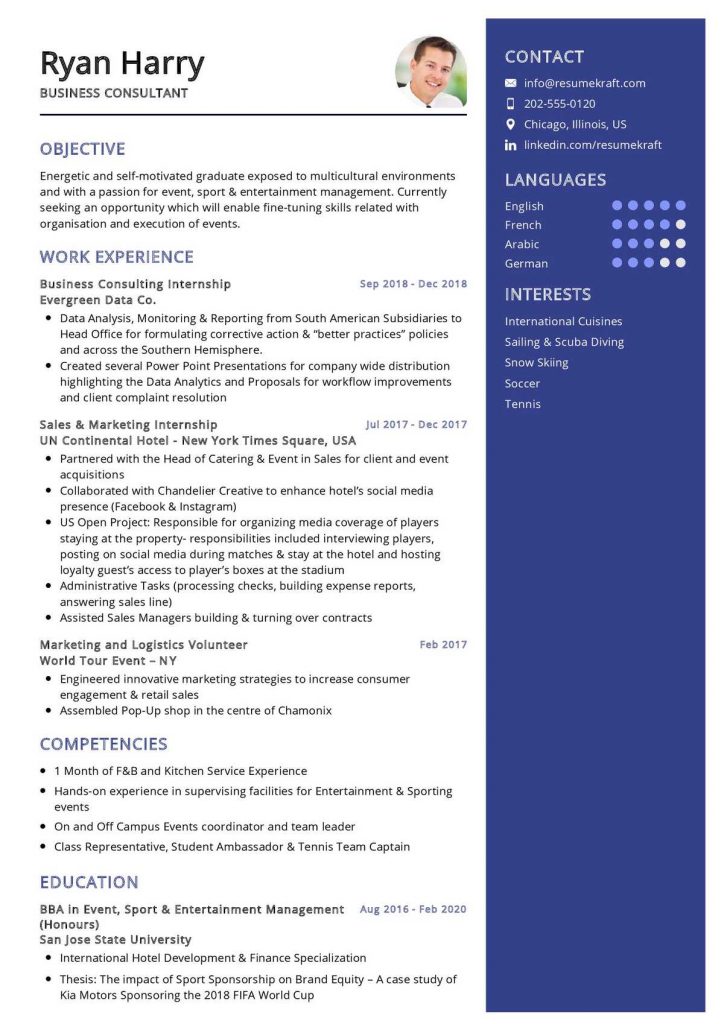
Program Manager CV Example
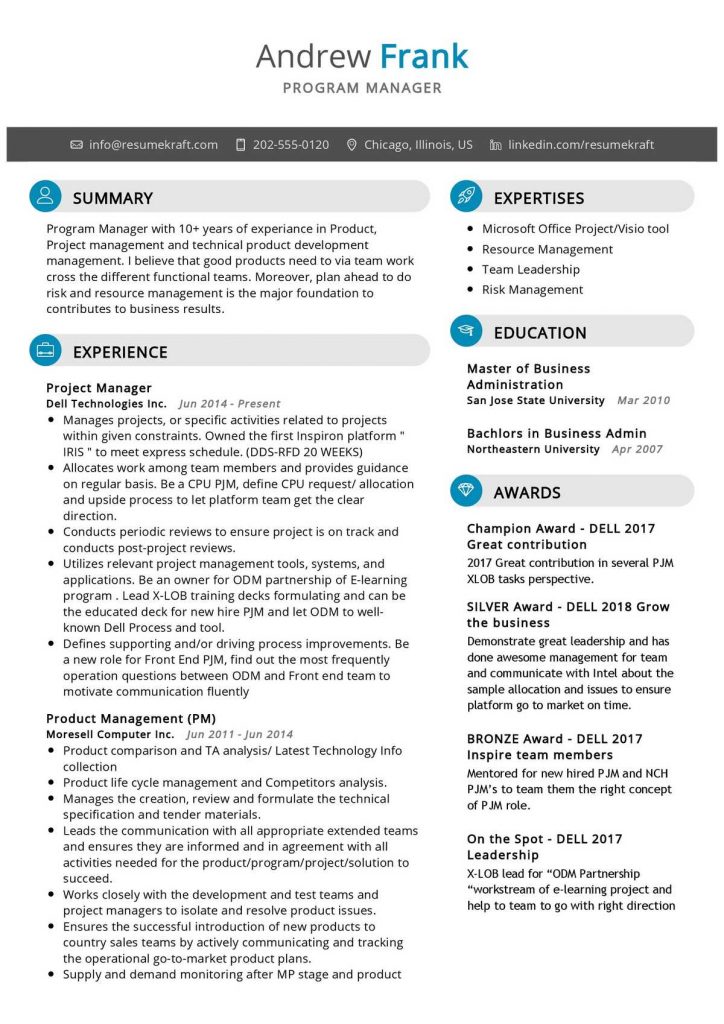
Accounts Executive CV Example
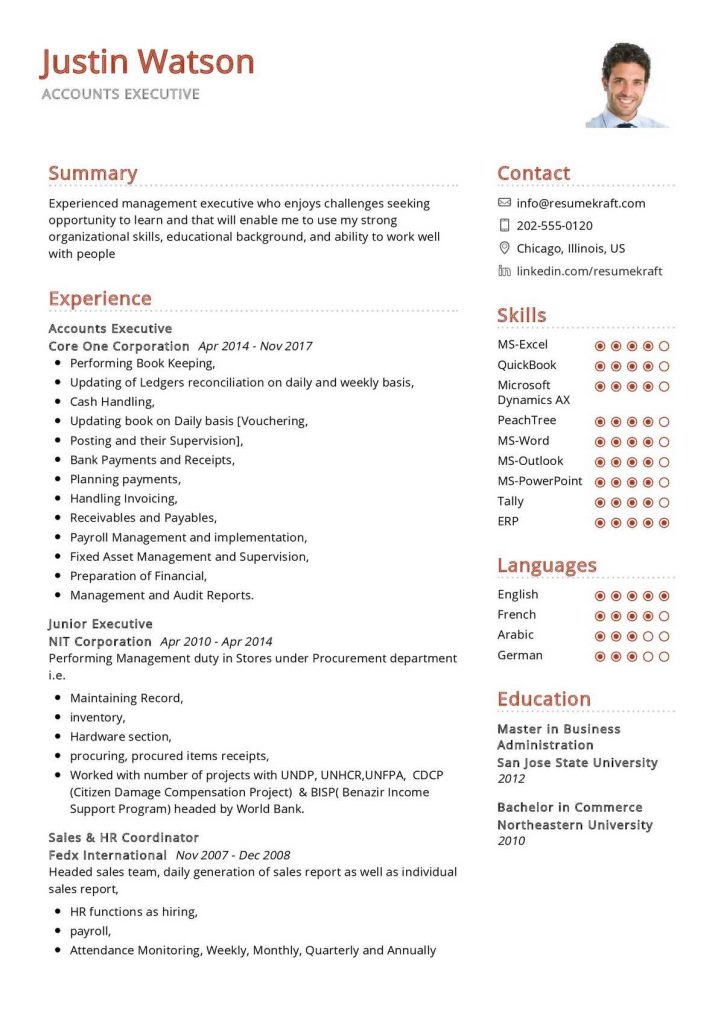
Business Development Consultant CV Example
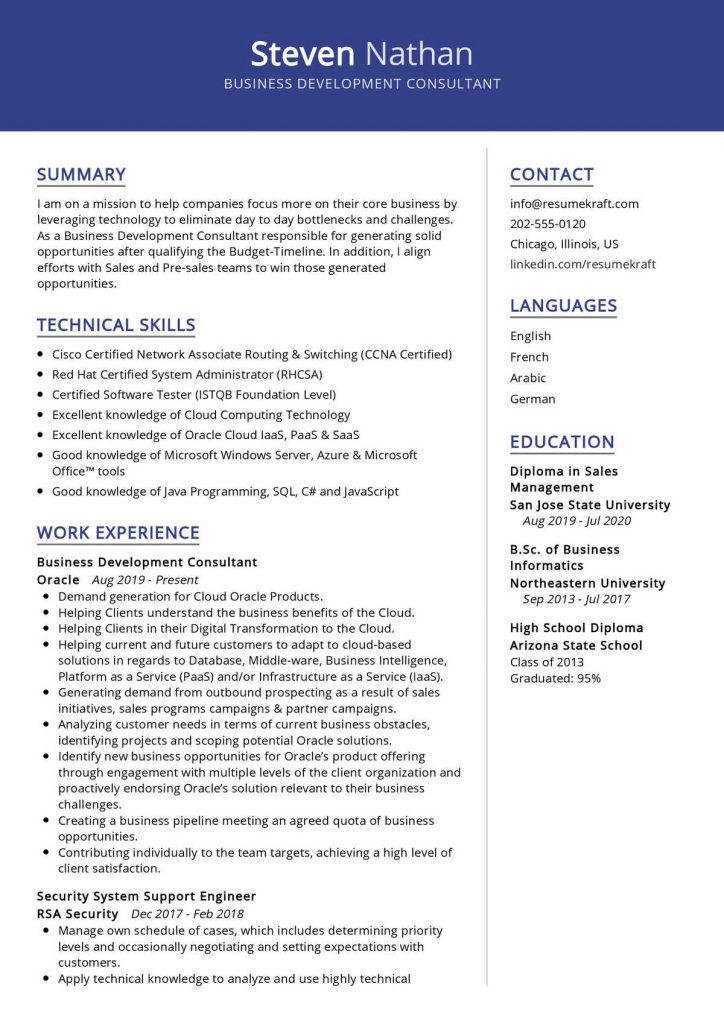
Customer Service CV Example
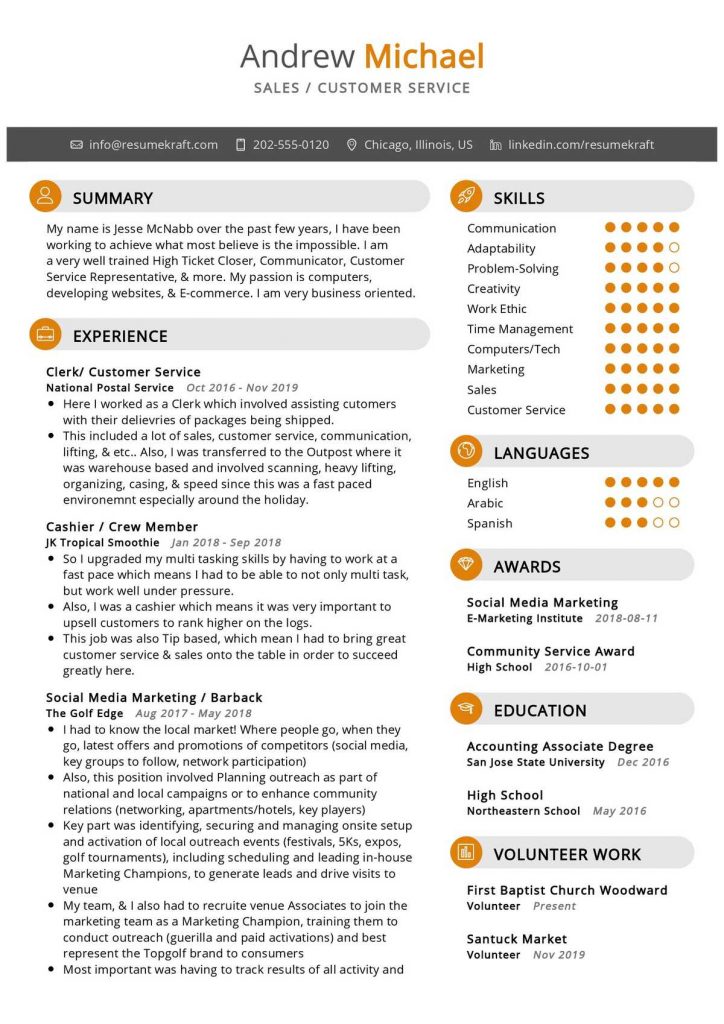
Registered Nurse CV Example
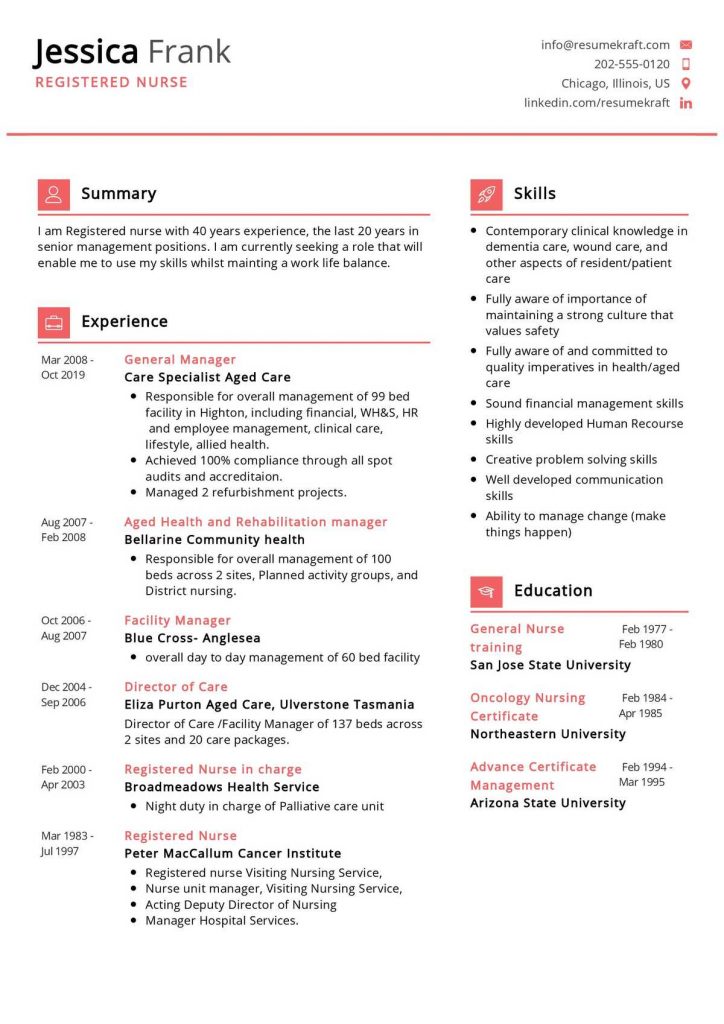
Data Analyst CV Example
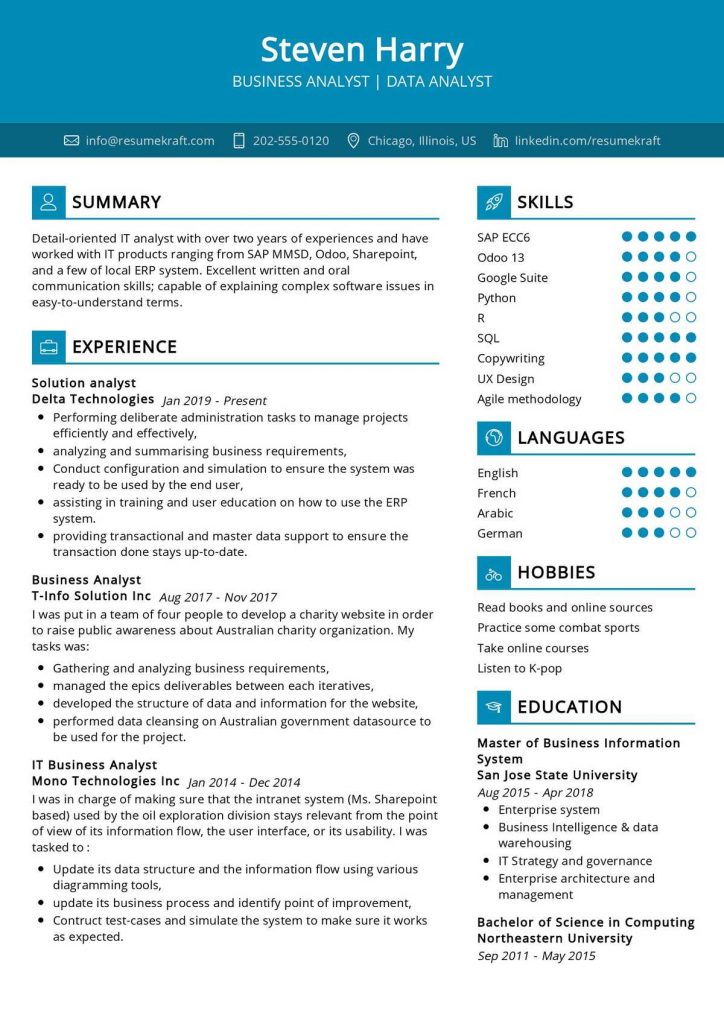
Engineer Controls CV Example
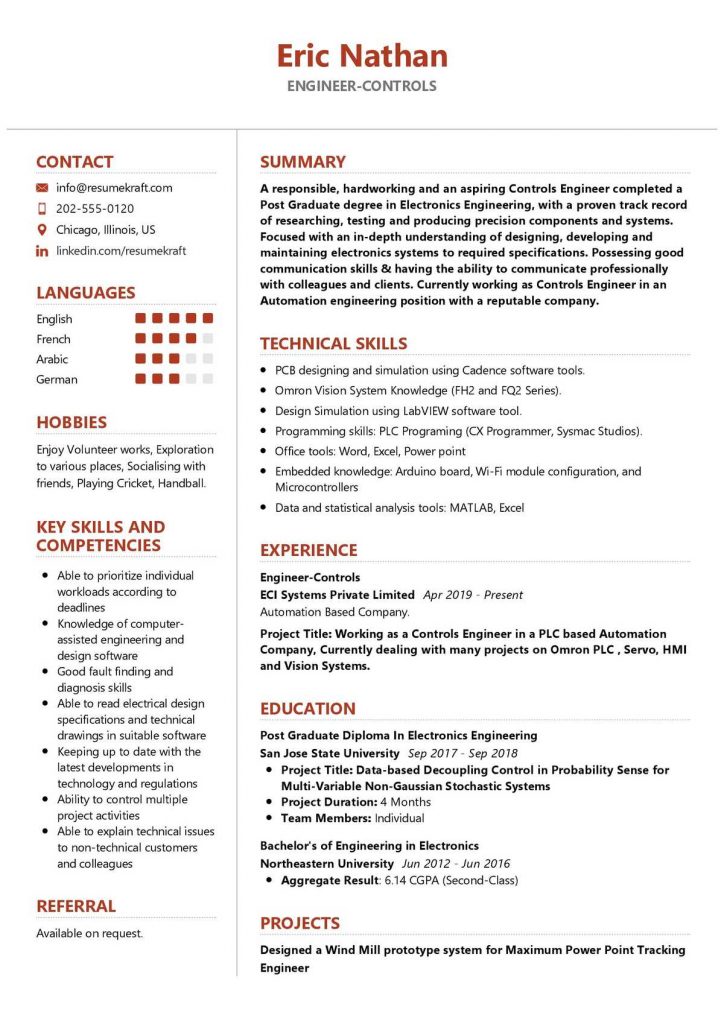
Portfolio Manager CV Example
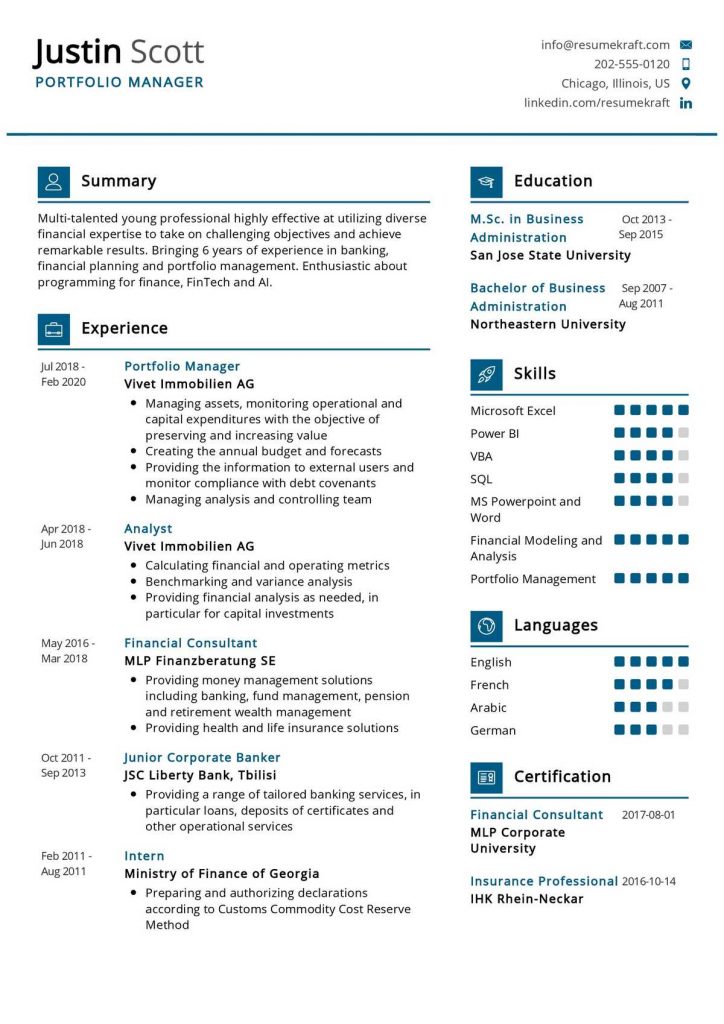
Marketer CV Example
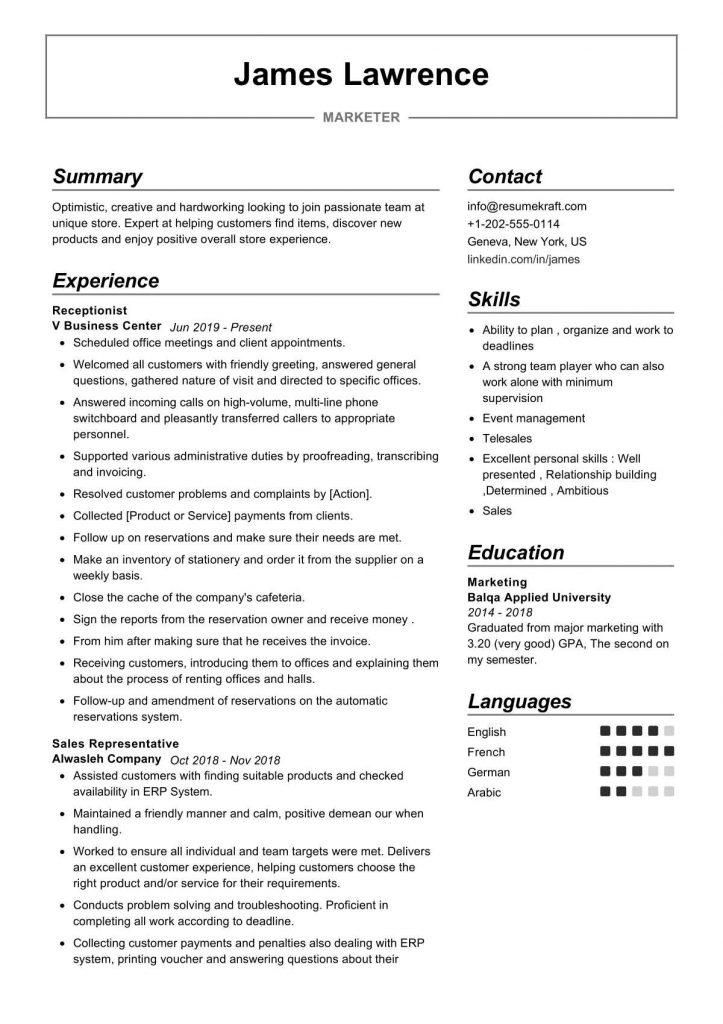
Financial Controller CV Example
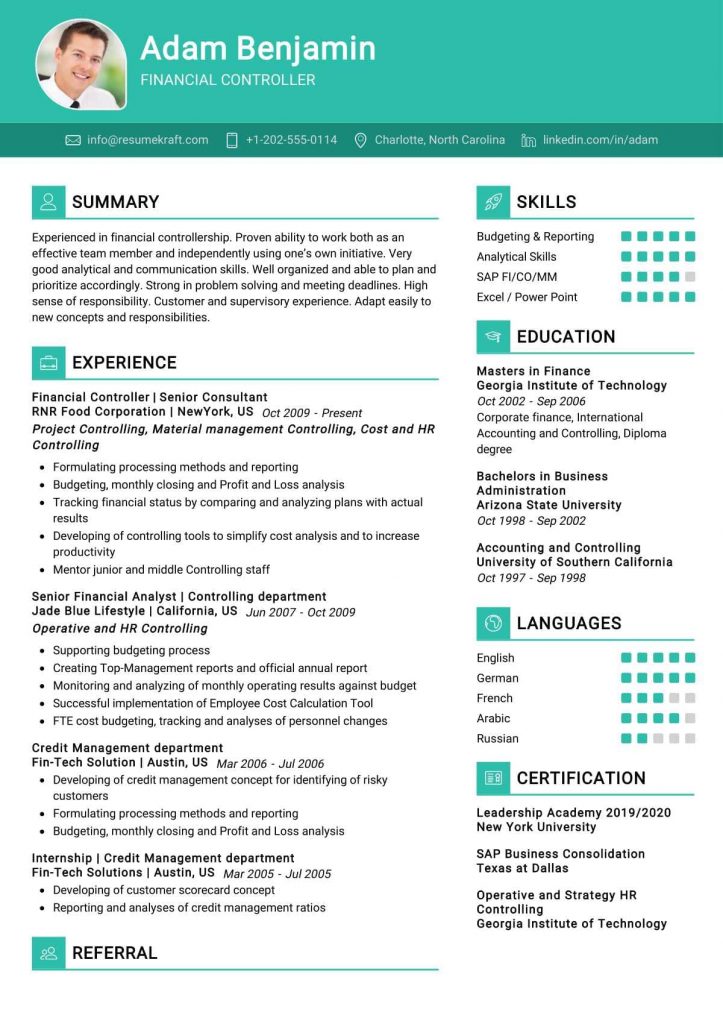
Finance Director CV Example
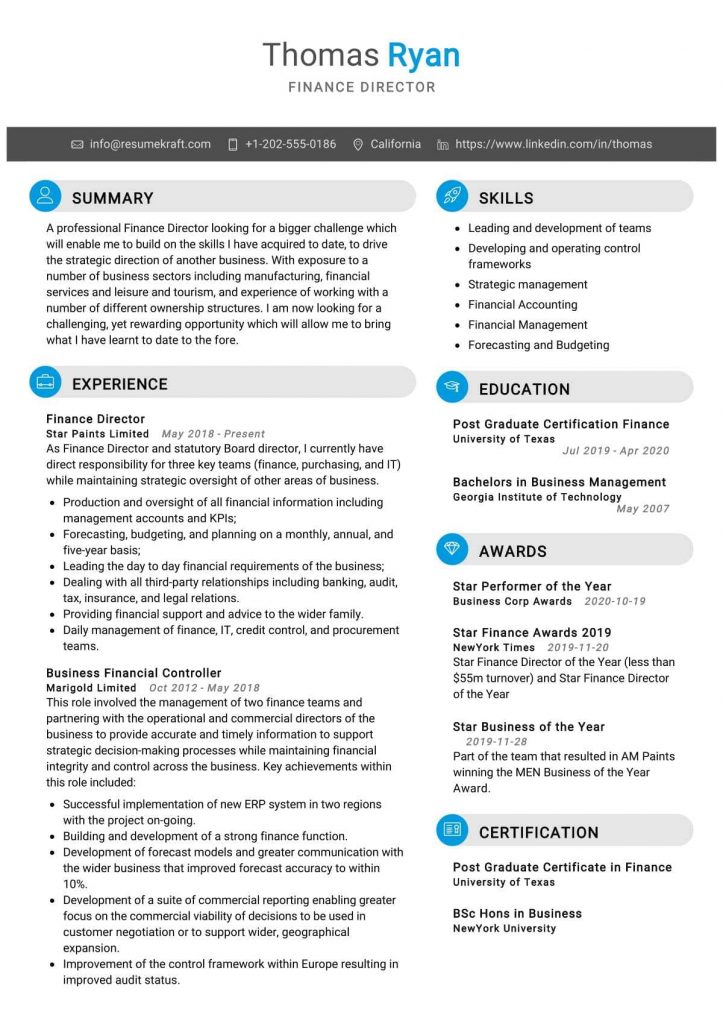
Instructional Designer CV Example
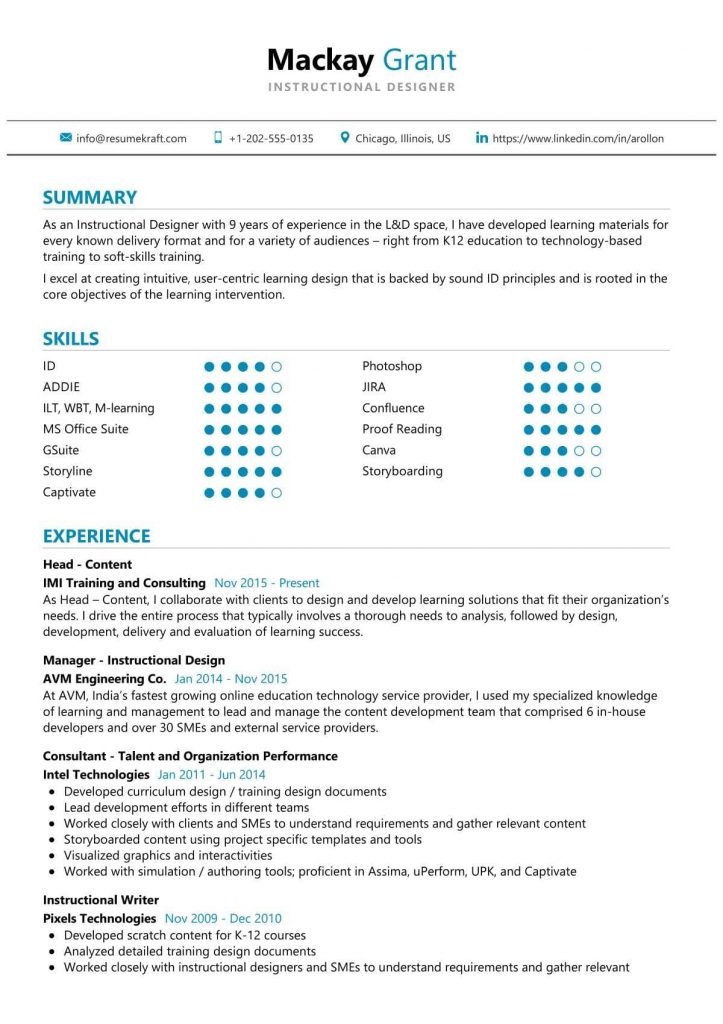
logistics Manager CV Example
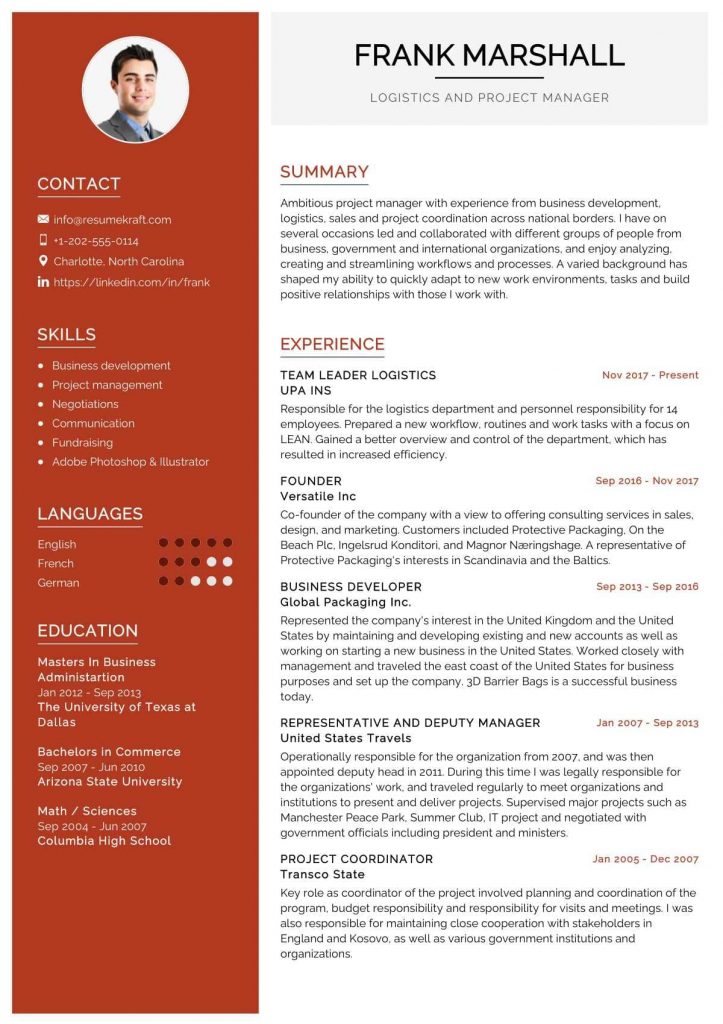
Account Manager CV Example
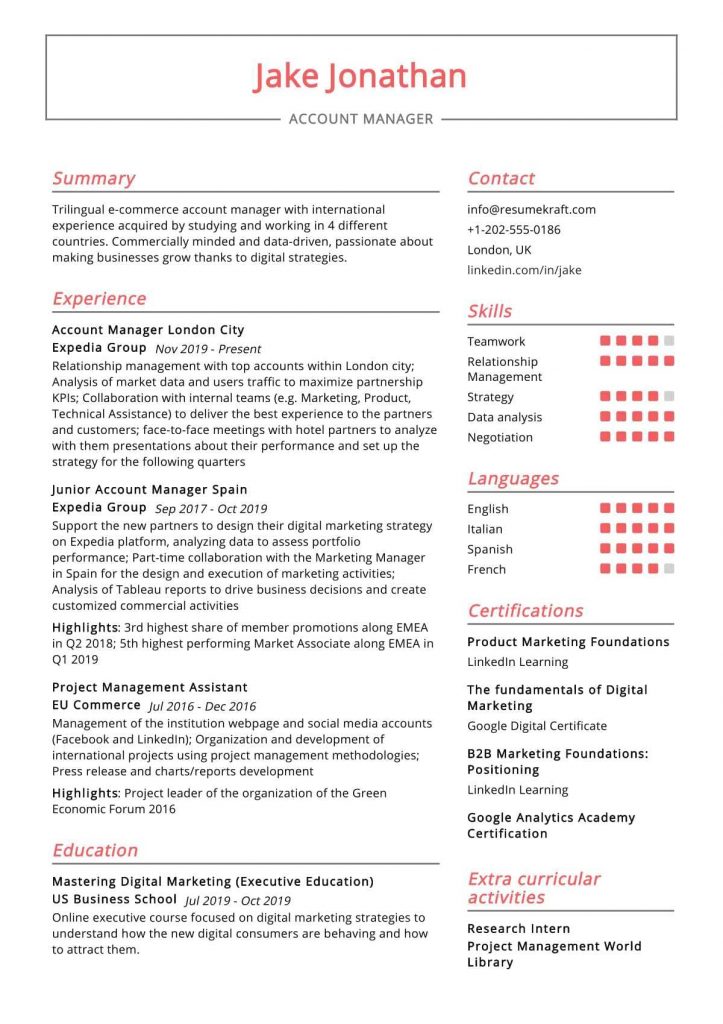
Computer Scientist CV Example
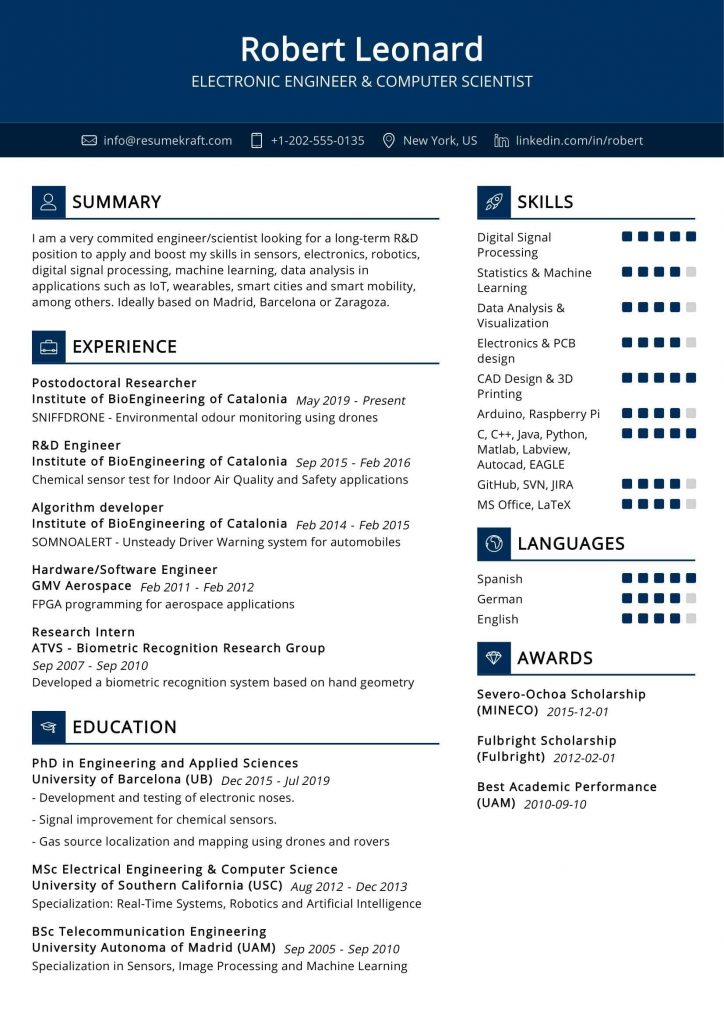
How do I make my CV unique?
While it is important to include the standard information that employers are looking for in your CV, it is also important to stand out from other applicants and show a potential employer why you would be a good fit for their company. How can you accomplish this? There are several different ways:
- Use target keywords: If there are some keywords specific to a job that you want, then add them in your resume and cover letter as appropriate.
- Make your CV interesting: You want to make sure that the reader will be interested in reading more of what you have to say. If you can find a unique angle or angle that they haven’t seen before, then include it.
- Add accomplishments: If there is something specific that you did during your job that is relevant to the position for which you are applying, then include it in your CV and highlight it.
- Include outside activities: If you have participated in outside activities such as sports or community service organizations, then include these certificates and awards in your CV so that you can stand out from other applicants who may not have done the same things.
- Include personal information: If you have a disability or an illness that could affect the way you perform a job, then mention that at the bottom of your CV in a separate section.
- Sign your CV: Before you send out any documents with your name on them, make sure that it is correct and that you have verified the information is accurate by double-checking it. At the very least, make sure that the contact information (phone number and email address) are correct.
- Create a timeline: A timeline will help you stay organized when writing your CV and help you prioritize what information to include and what information to leave out. Write down every job that you have had, any certificates or awards that you have received, any hobbies or interests that you have had, and anything else that will help a potential employer learn about you as an individual.
- Use a CV template: There are many different templates for resumes and CVs available online. These templates will help provide a structure for writing your CV and will provide you with some of the most common information that needs to be included in your CV.
- Use the best CV builder to get every thing set professonaly.
- Get feedback: If you don’t know how to create a good CV or whether you are including all the information necessary, then ask someone else for help. If you are still in school, then ask a teacher or counselor for help. You can also seek out feedback from friends who are looking for work to find out how they would like their CV to be written.
Frequently Asked Questions
The best CV format is the one that works best for you and your experience. There is no single “best” CV format, so choose the format that highlights your strengths and achievements most effectively.
Be sure to use a professional CV format, such as reverse chronological order, which lists your most recent experiences first. Include your contact information, education, work experience, skills, and references in your CV.
A CV is a longer and more detailed document than a resume. It is often used by academics and researchers when applying for jobs.
Include your contact information, education, work experience, skills, and references in your CV.
Your CV can be as long as you need it to be, but be sure to include only relevant information. CVs for academic or research positions are often longer than those for other positions, so be sure to tailor your CV to the specific job you are applying for.
Do not include irrelevant or negative information in your CV.
Be sure to proofread your CV for any mistakes or errors before sending it off. Common mistakes to avoid include incorrect grammar, punctuation, and typos.
Yes, you can use a CV template to help you format your CV. However, be sure to tailor the template to fit your own individual experience and skills.
Some tips for formatting your CV include:
1. Use a professional CV format, such as reverse chronological order, which lists your most recent experiences first.
2. Include your contact information, education, work experience, skills, and references in your CV.
3. Be sure to use correct grammar, punctuation, and typos.
4. Proofread your CV before sending it off.
There are a few ways you can make your CV stand out, such as:
Highlighting any relevant experience or skills you have that are related to the job you are applying for.
Including any awards or accolades you have received.
Adding any publications you have written or been featured in.
Showcasing any volunteer work or community involvement you have.
Key Takeaways:
- Identify your purpose for creating the CV format.
- Use black font with a font size of 11 or 12.
- Use at least 2 line spacing.
- Avoid using bold font in your CV.
- List the most relevant experience first and then the less relevant ones nearby.
- Avoid using graphics and images in your CV unless necessary.
- Avoid using many font sizes and colors.
- Use headings to structure your CV.
- Use lists to provide additional information that is not covered by the other sections of your CV.


